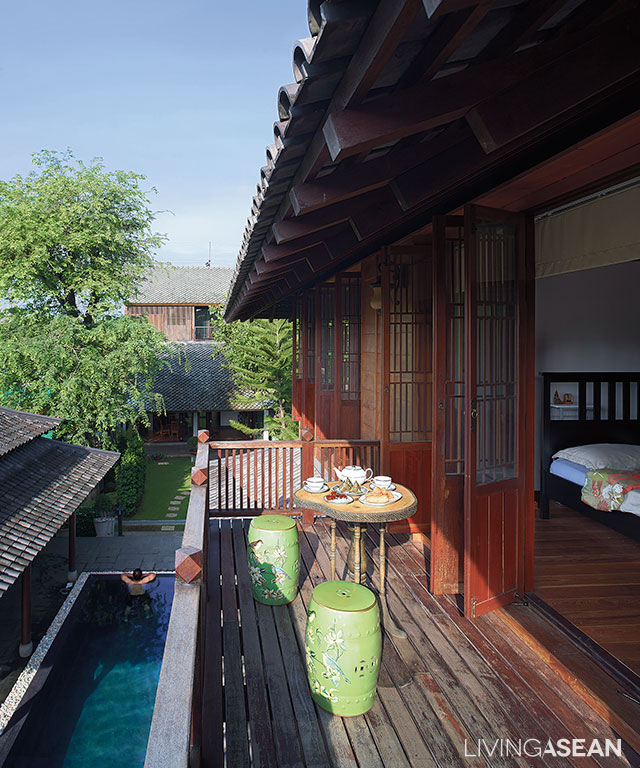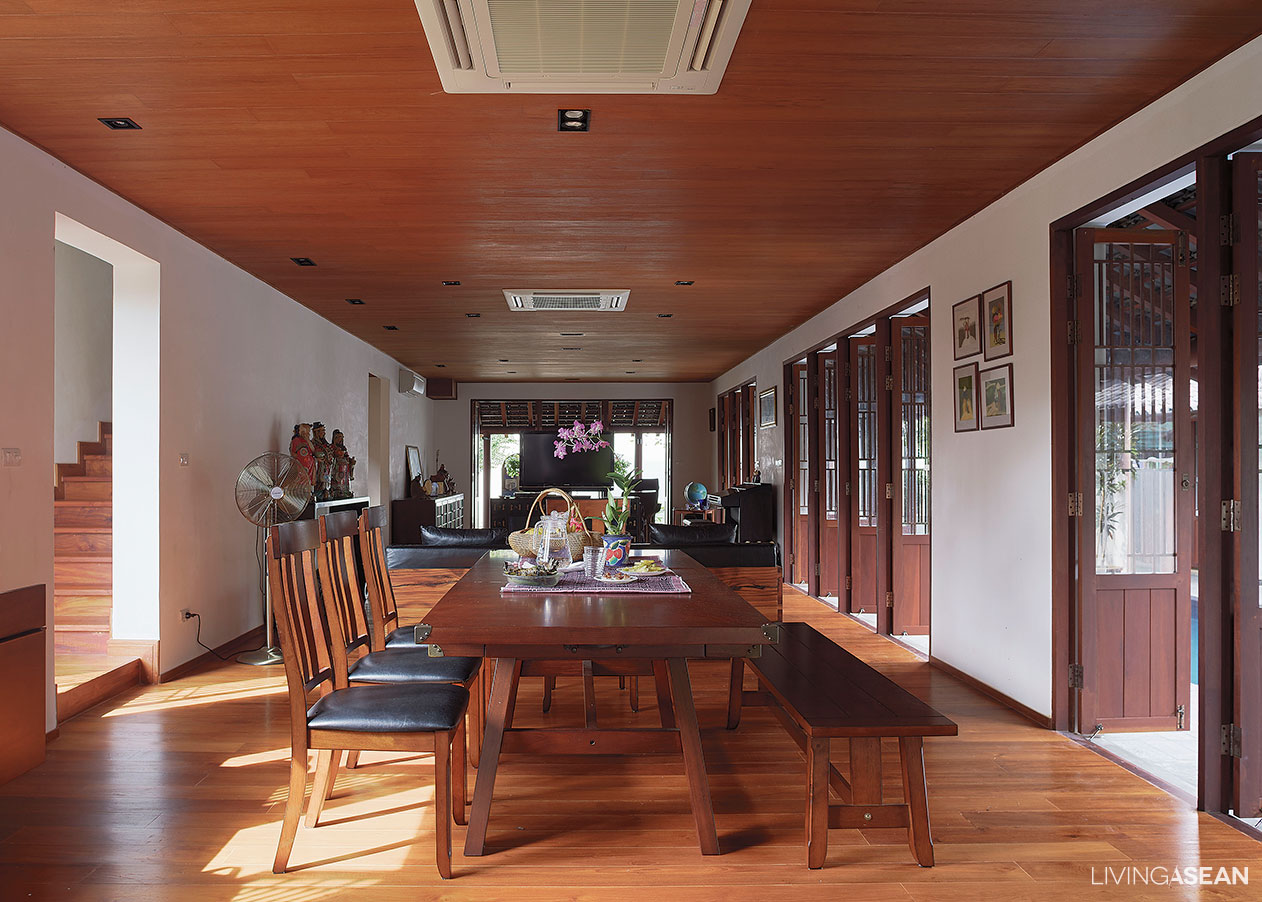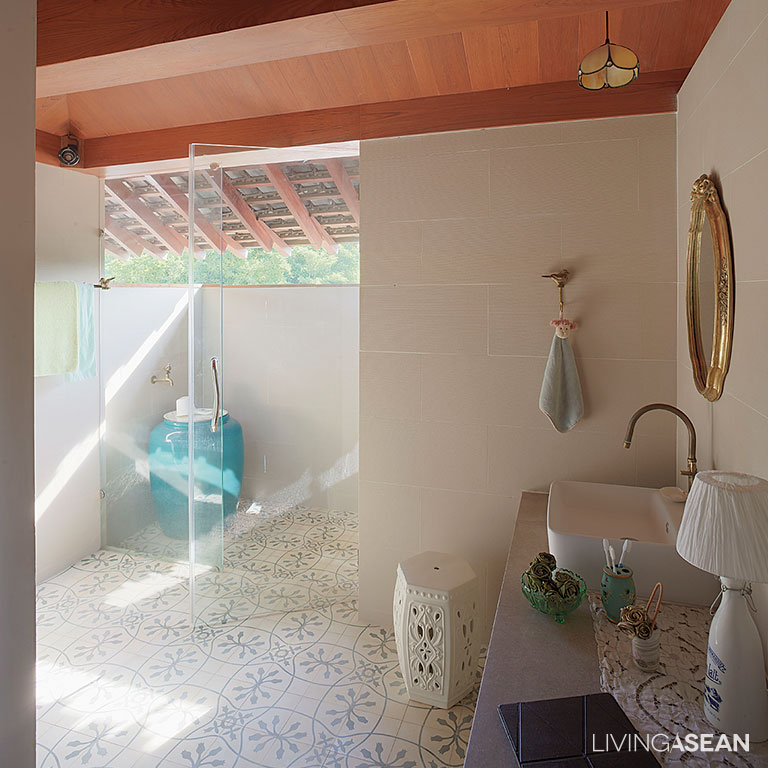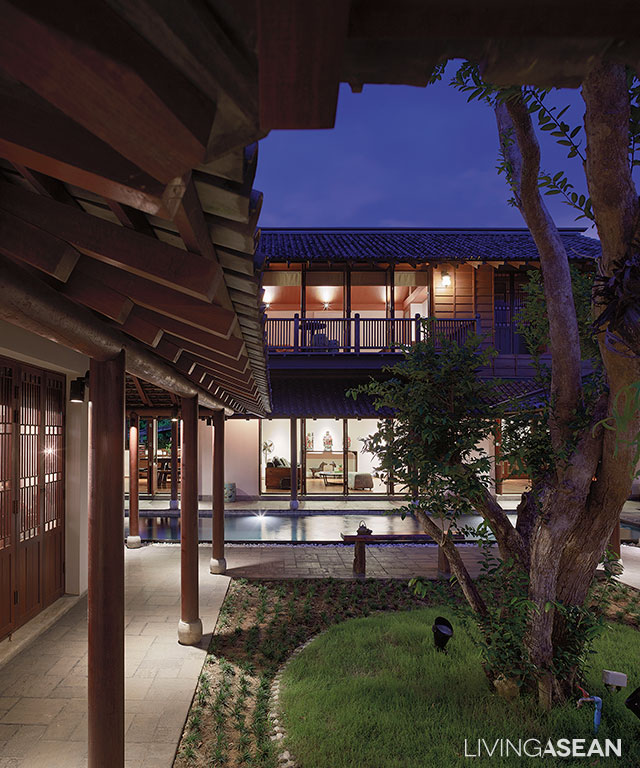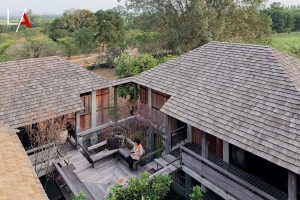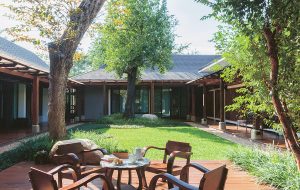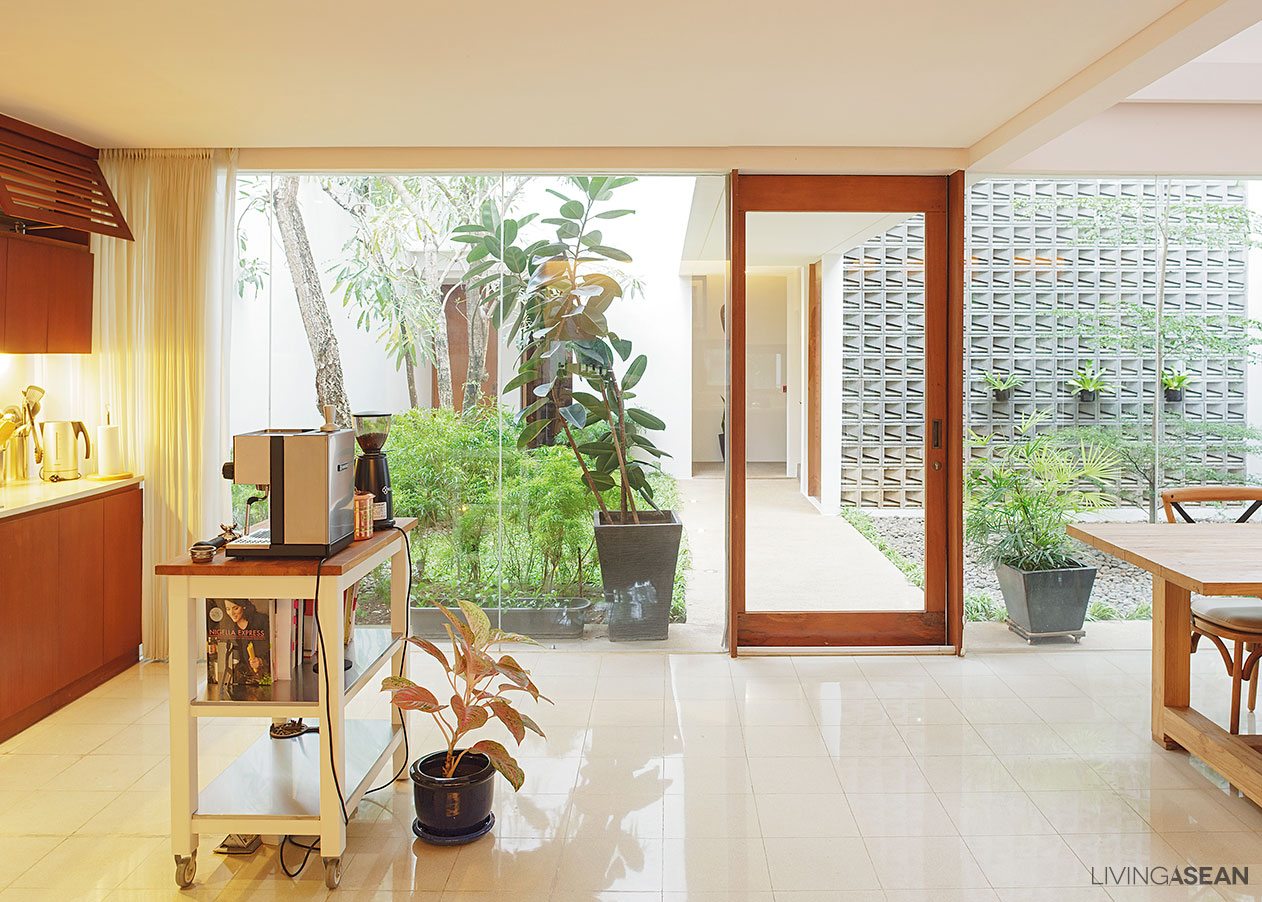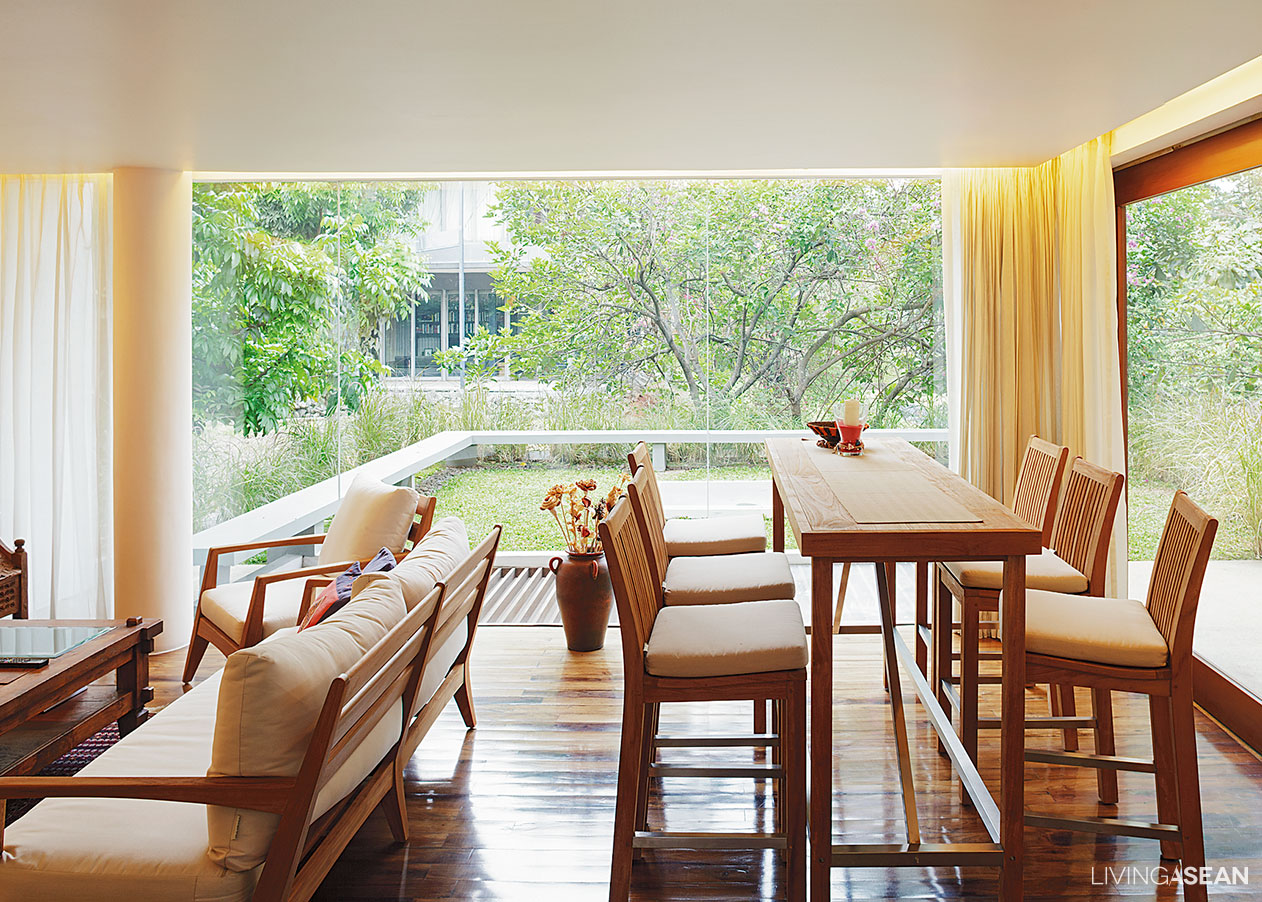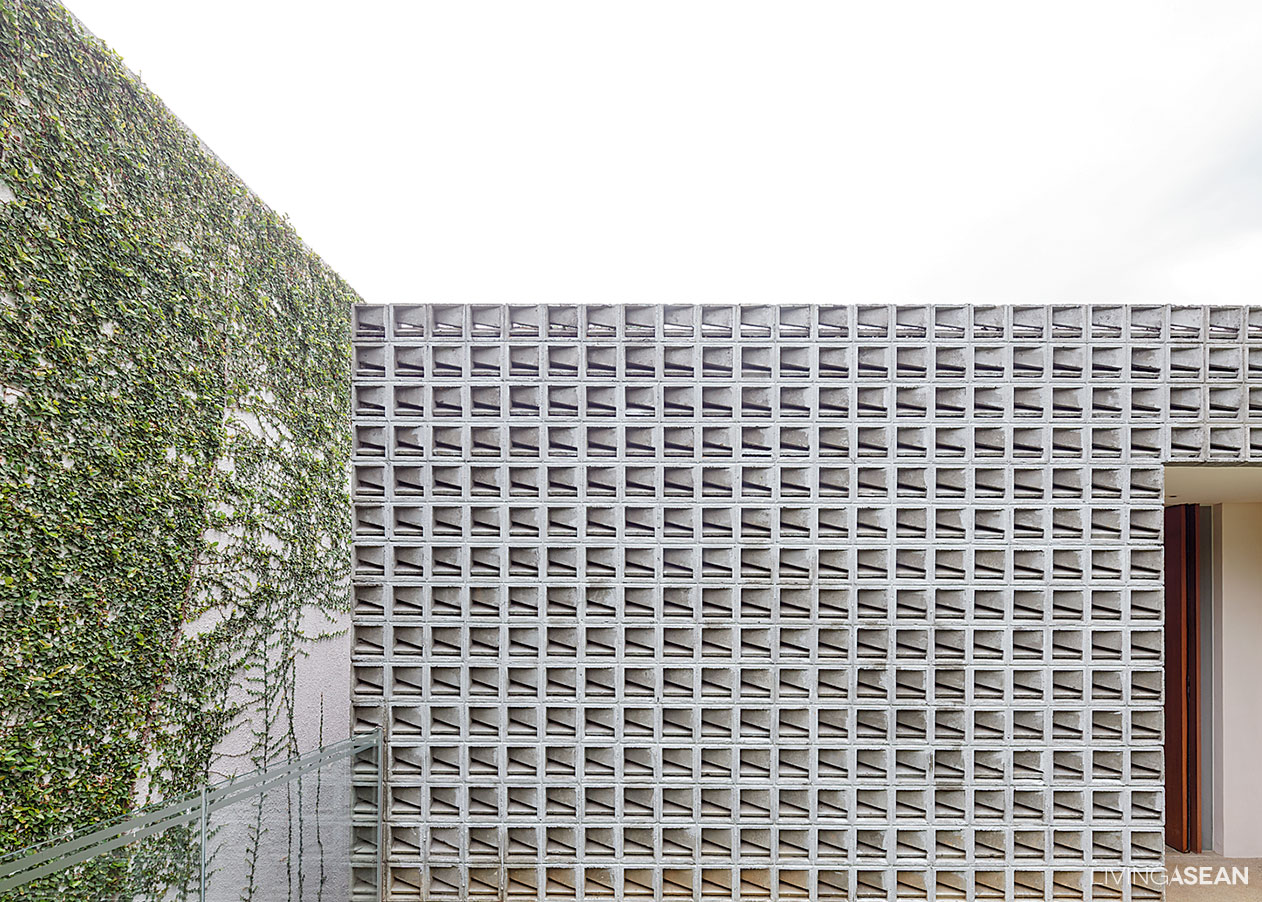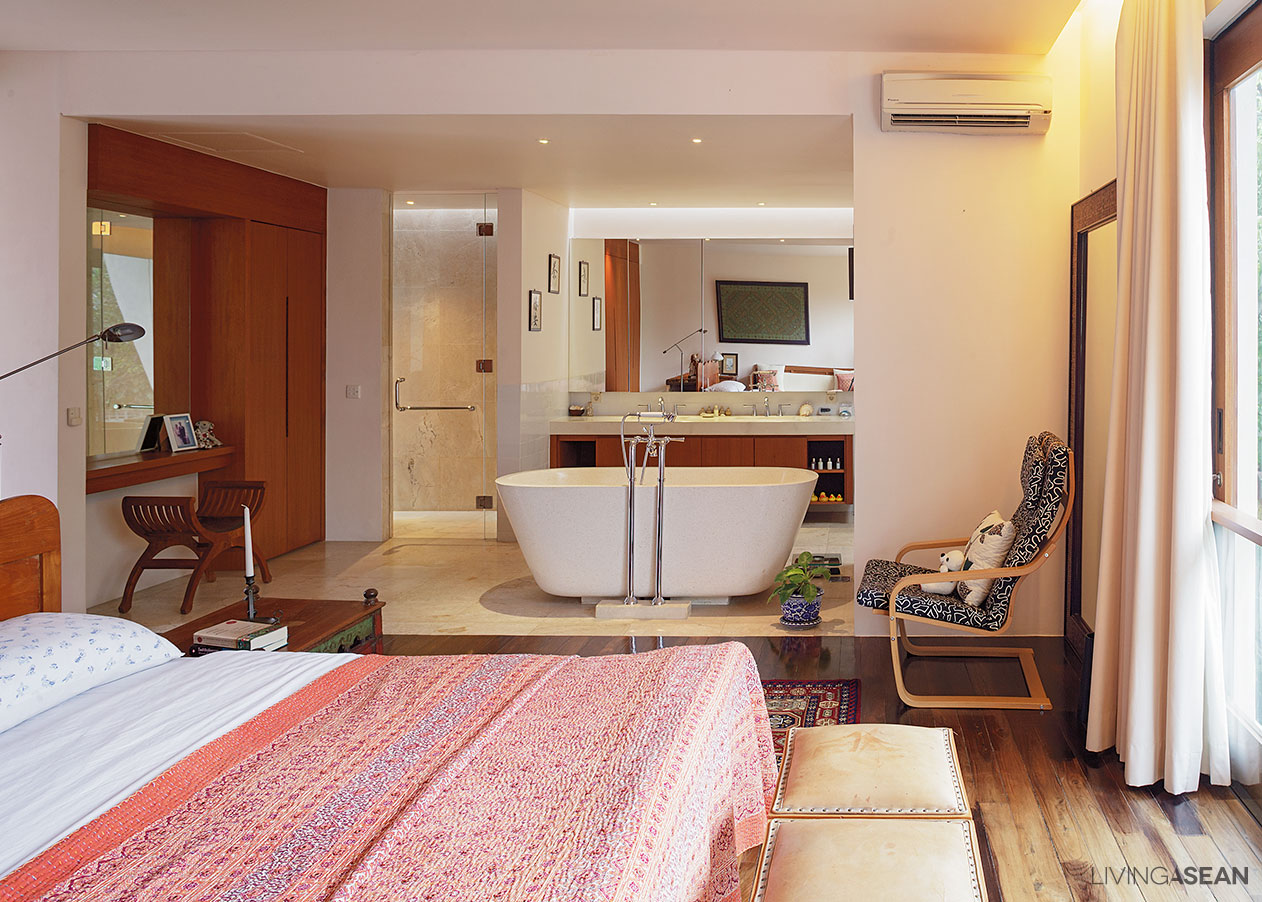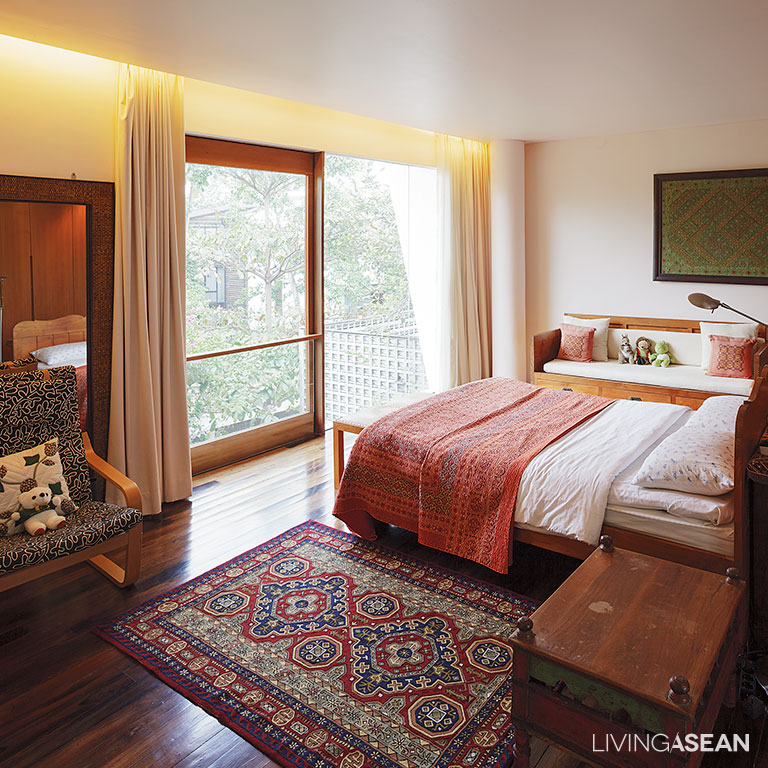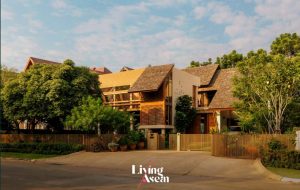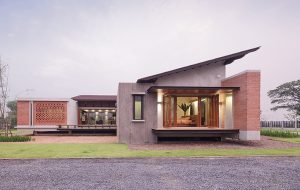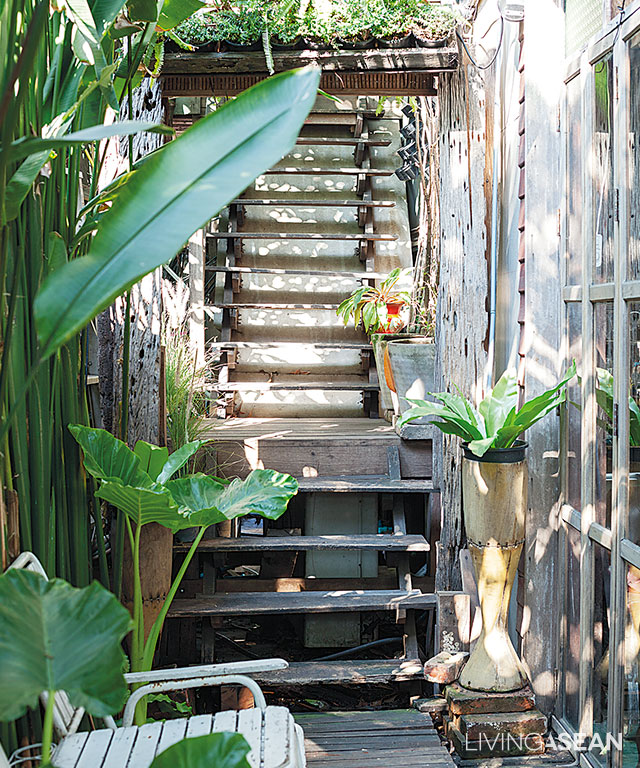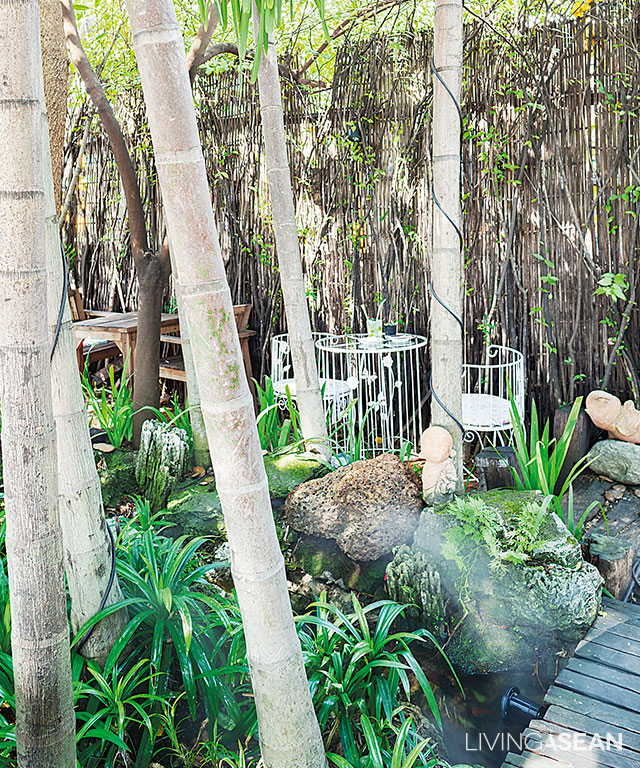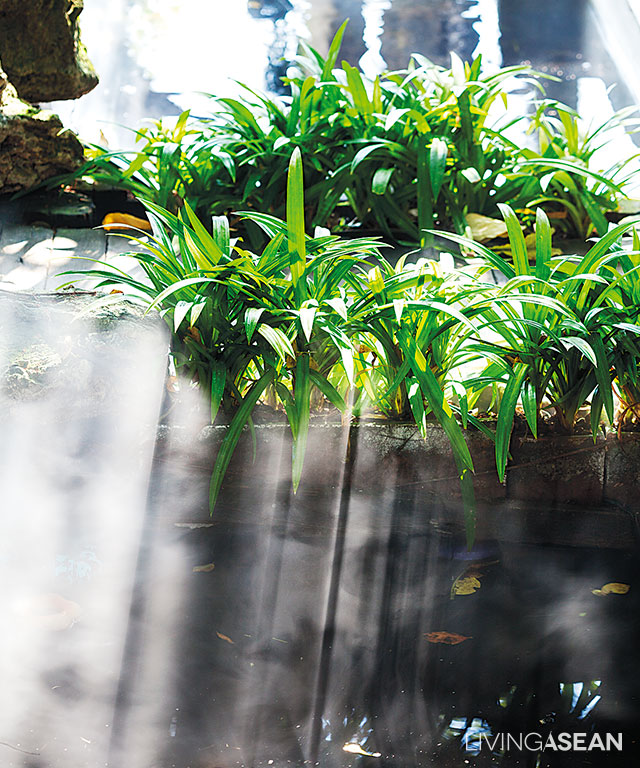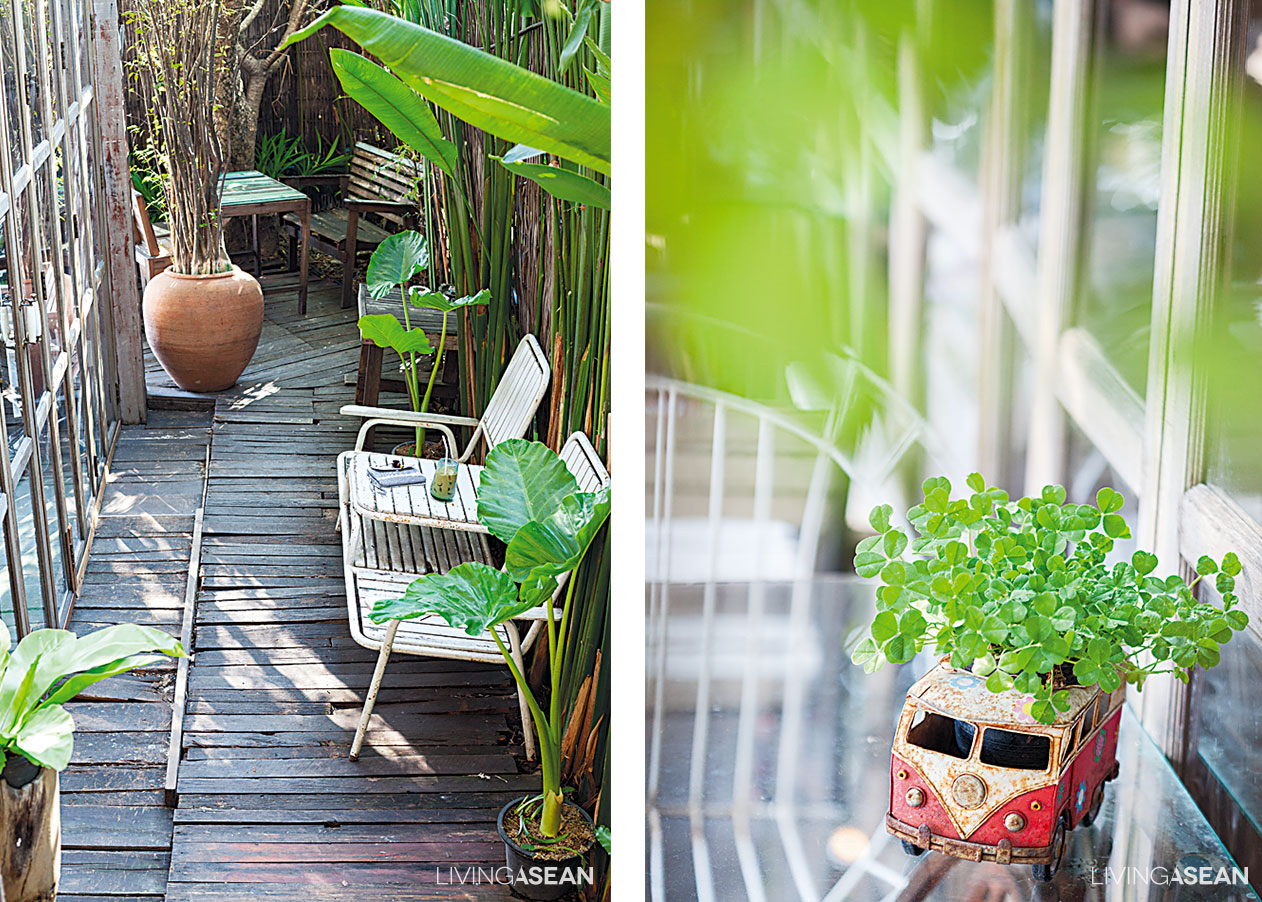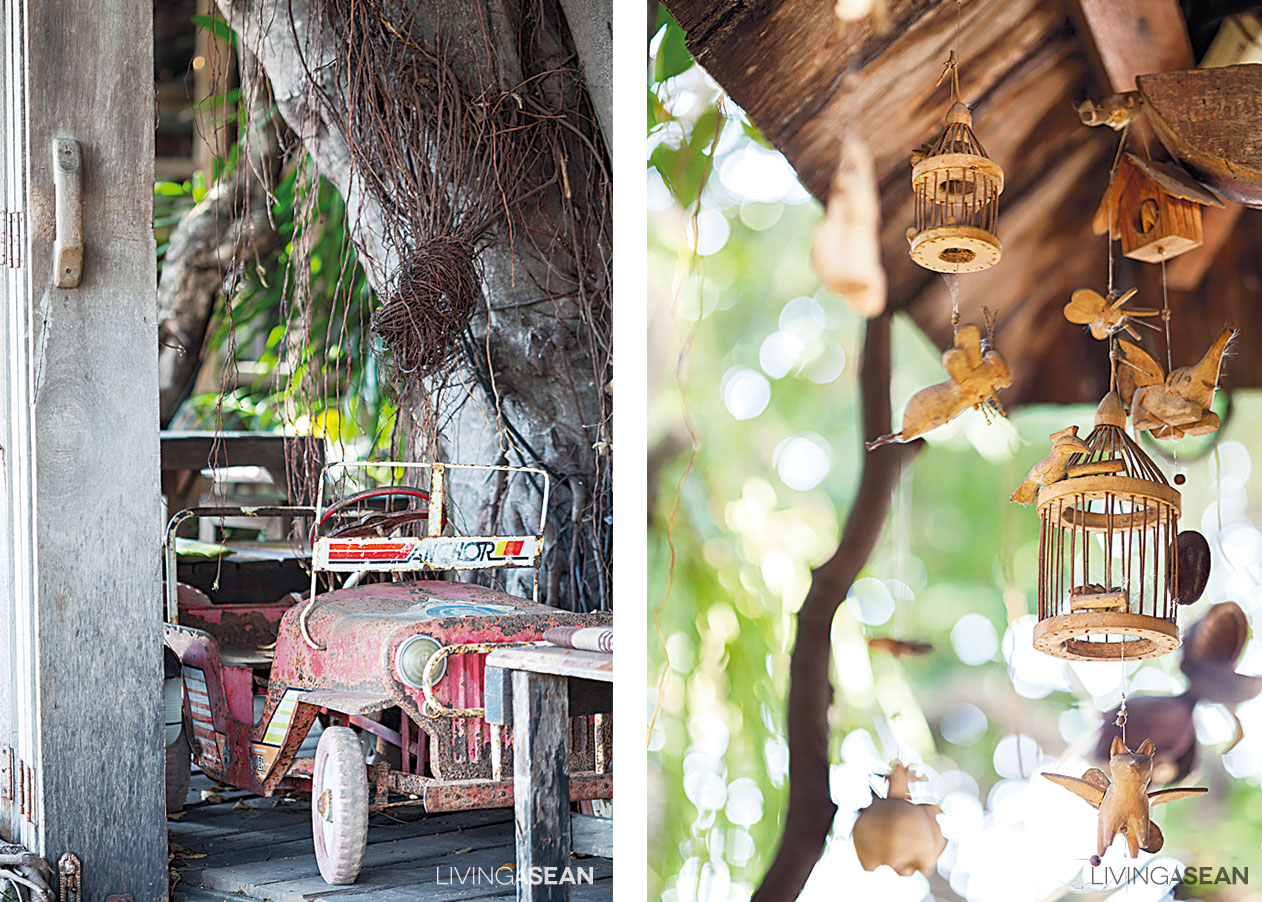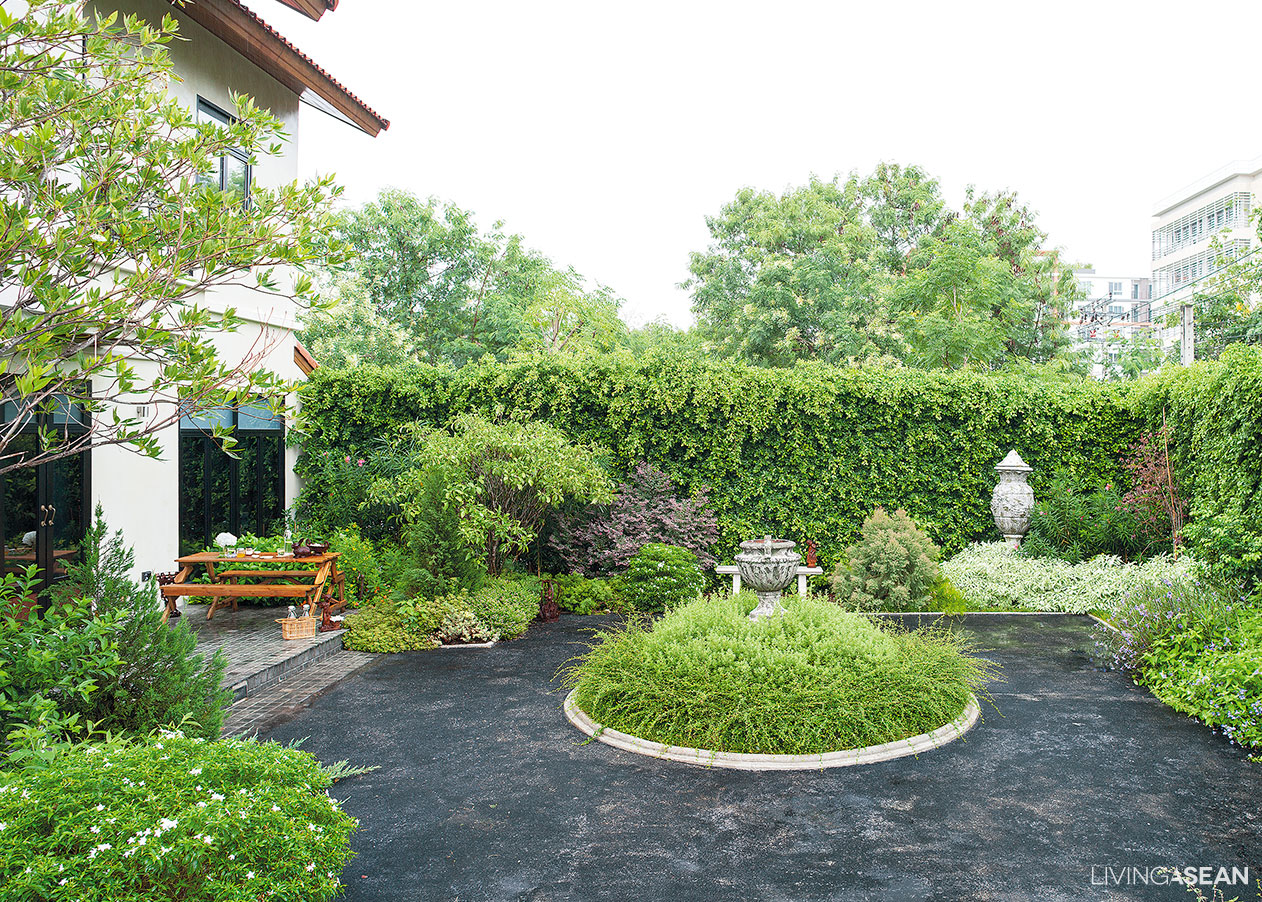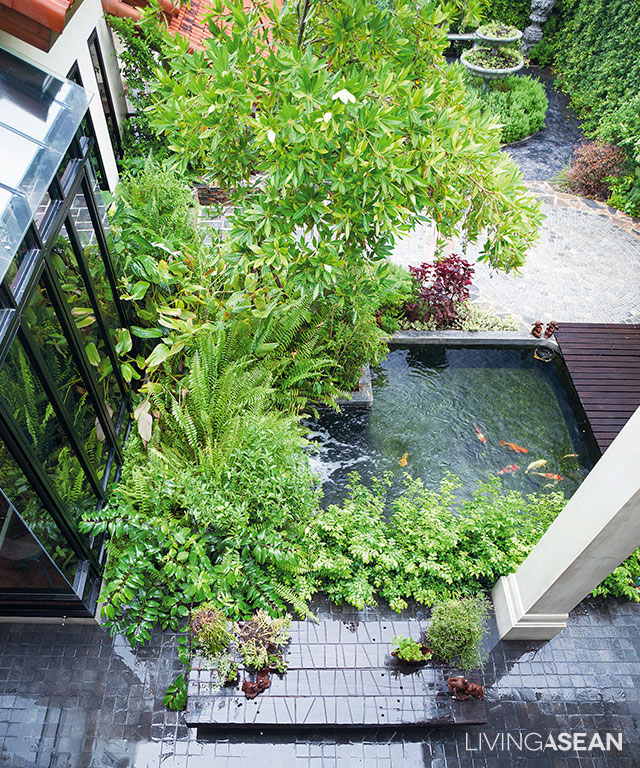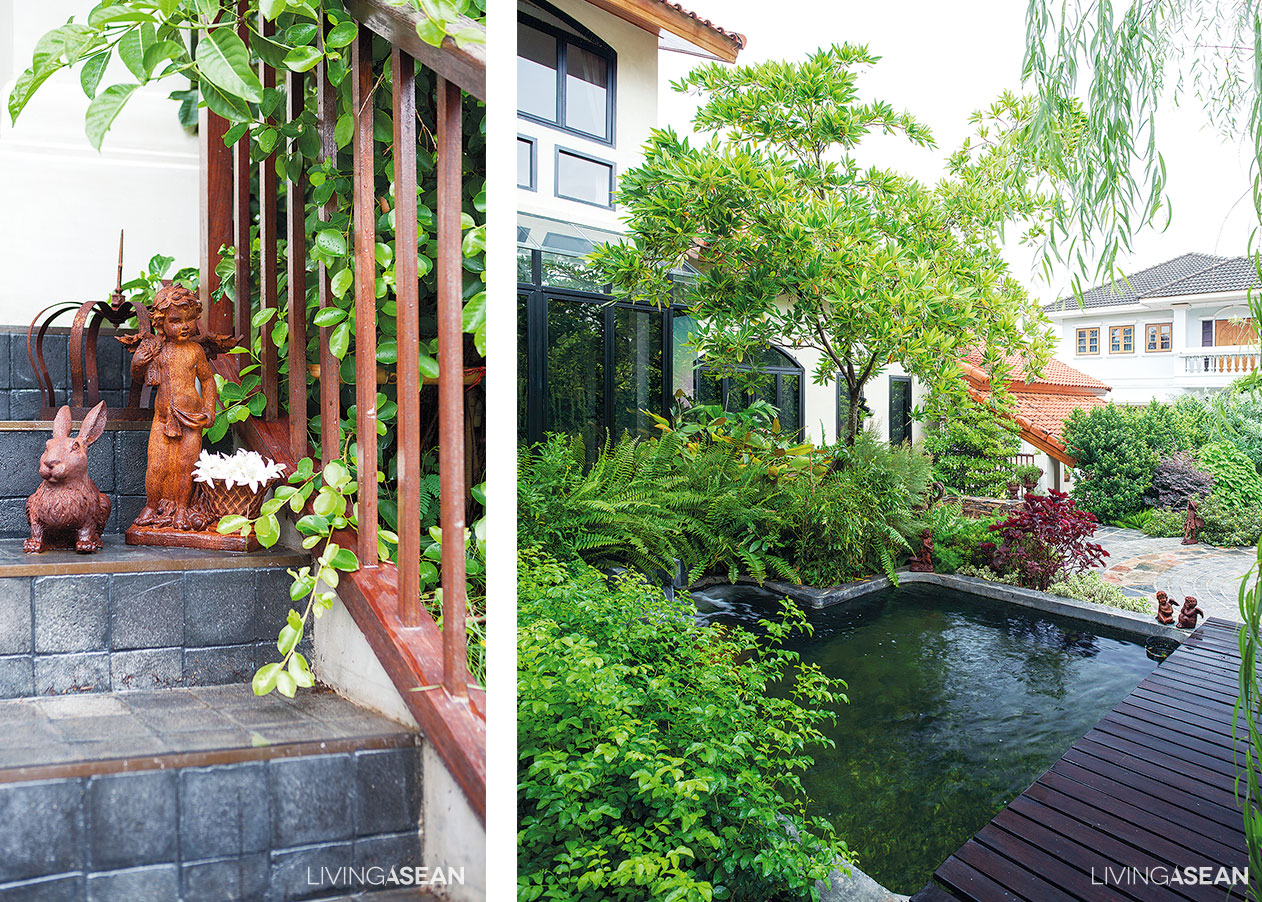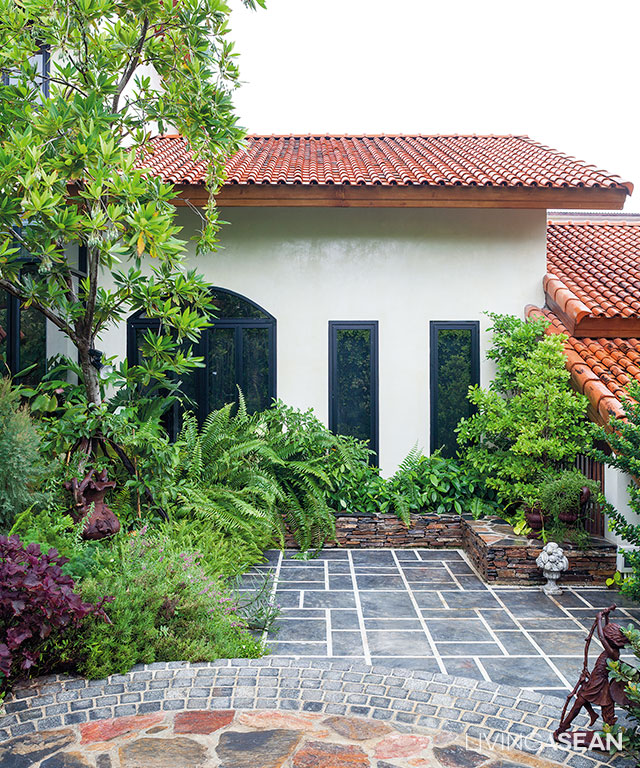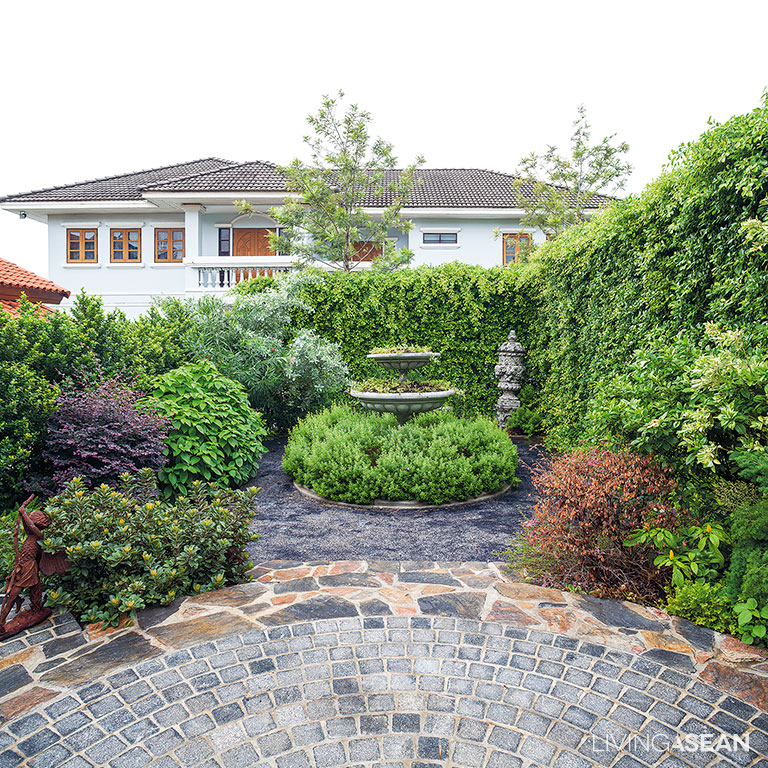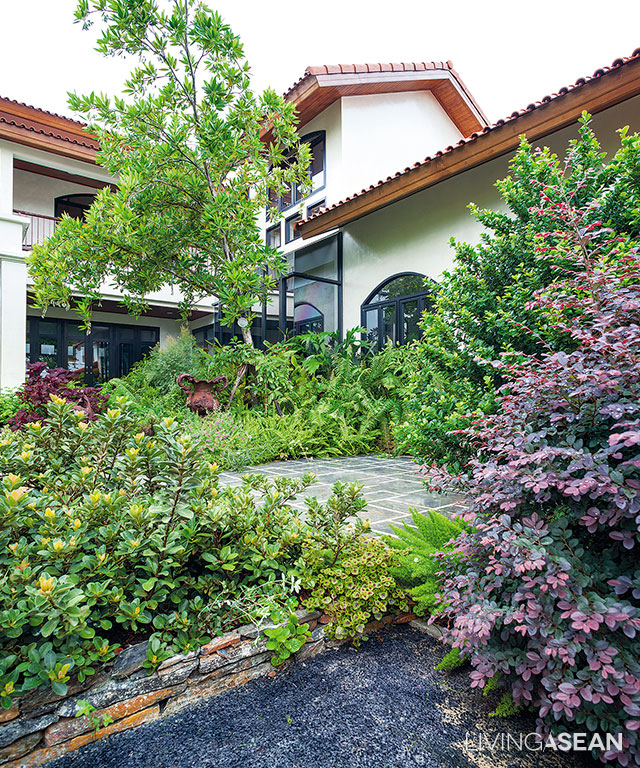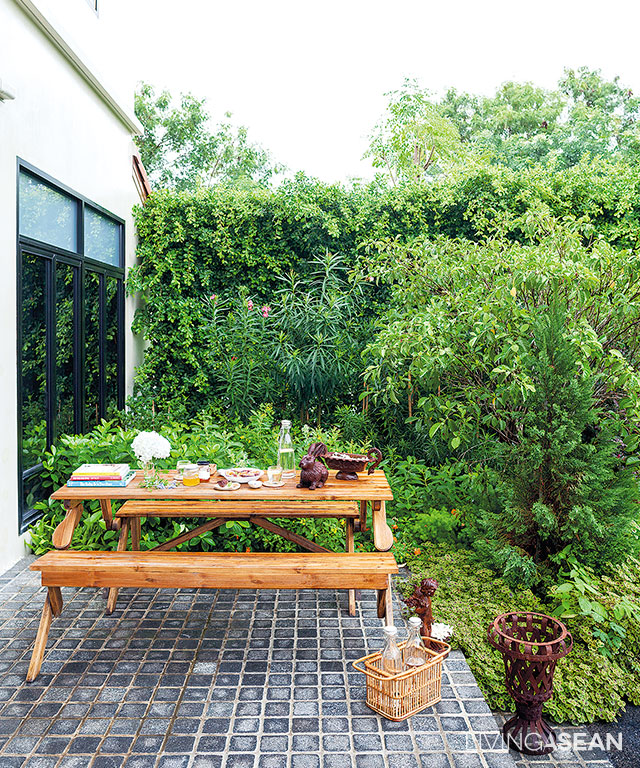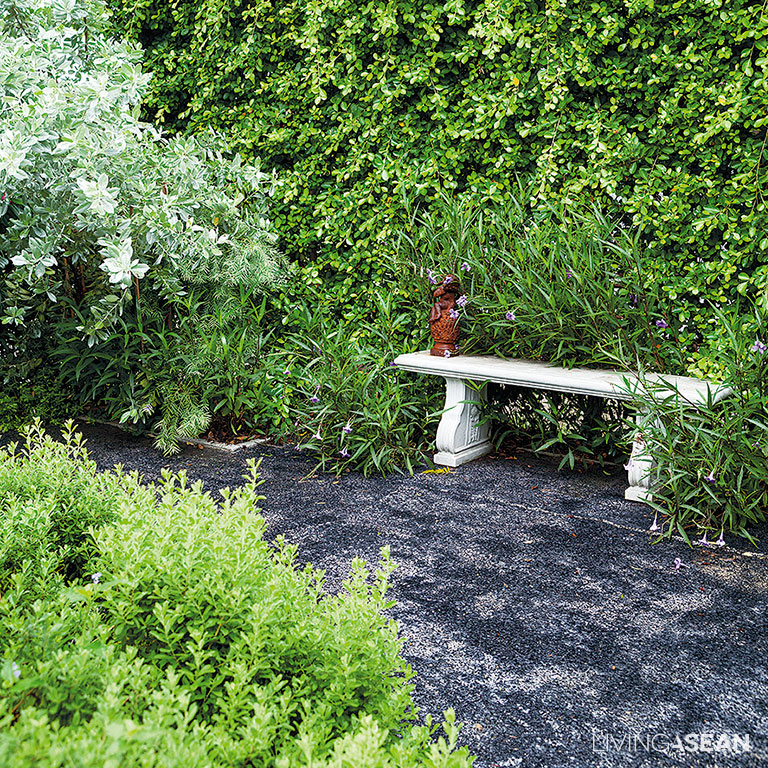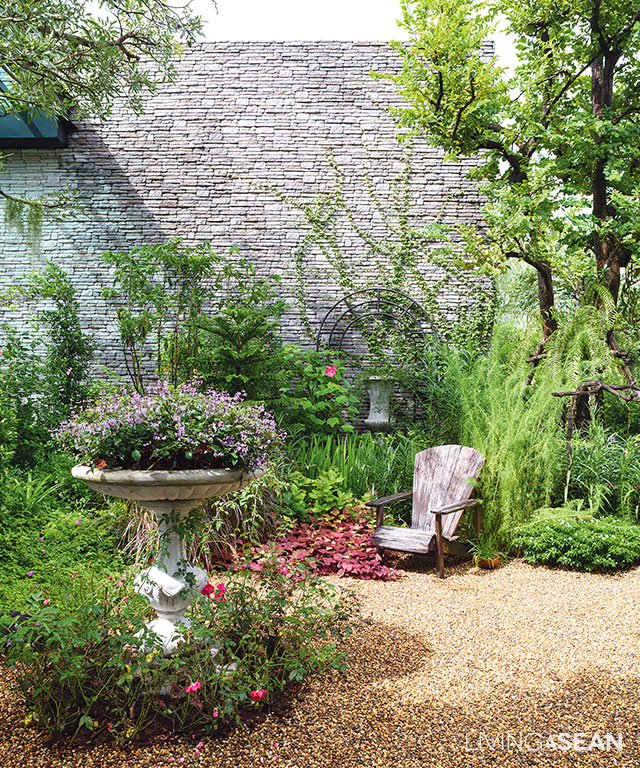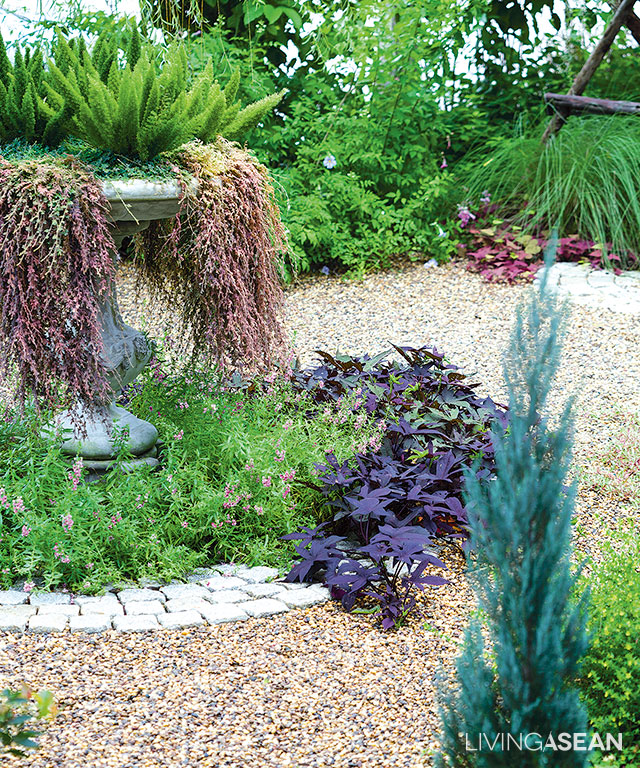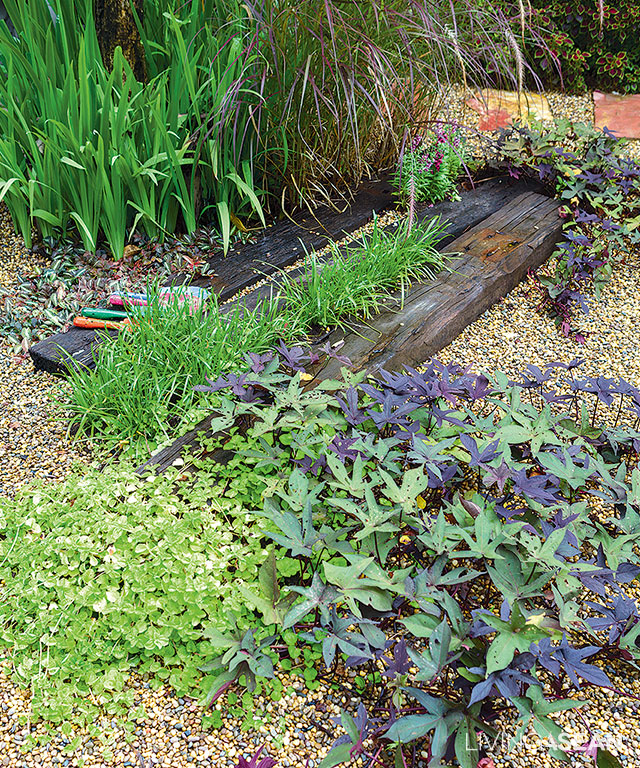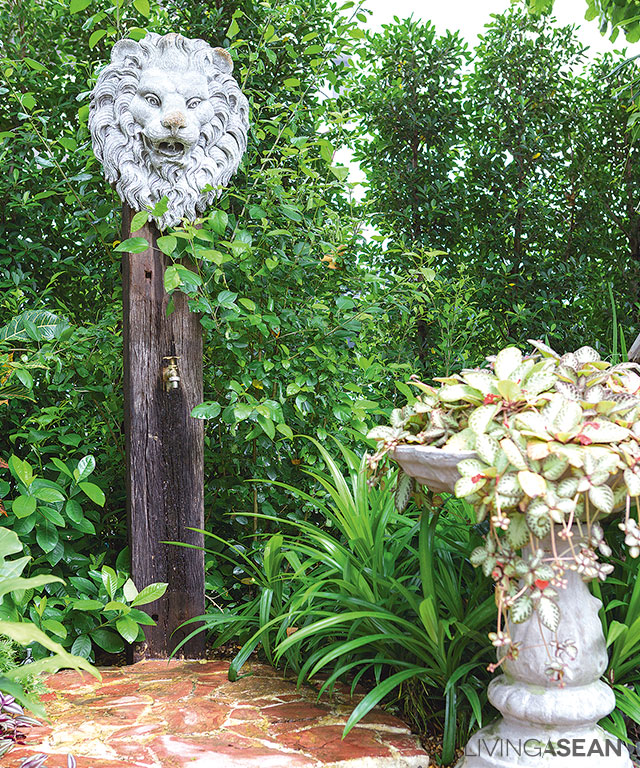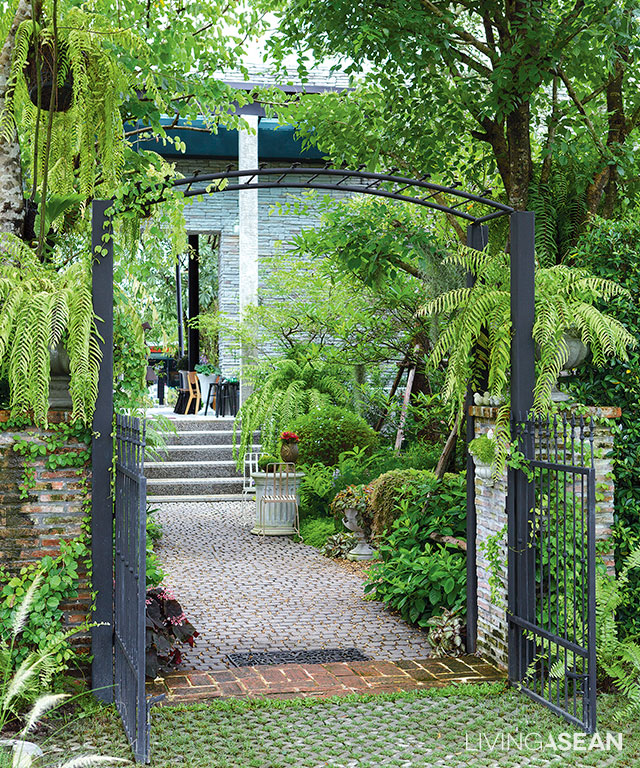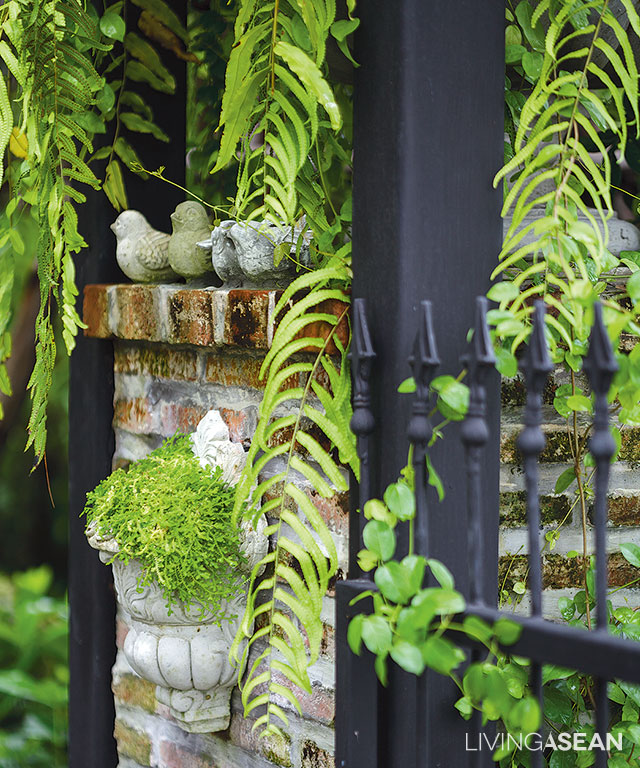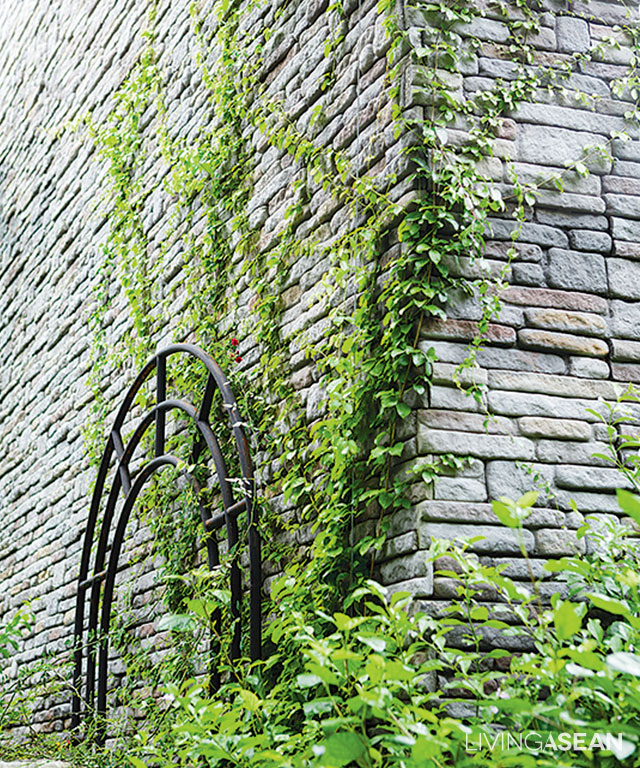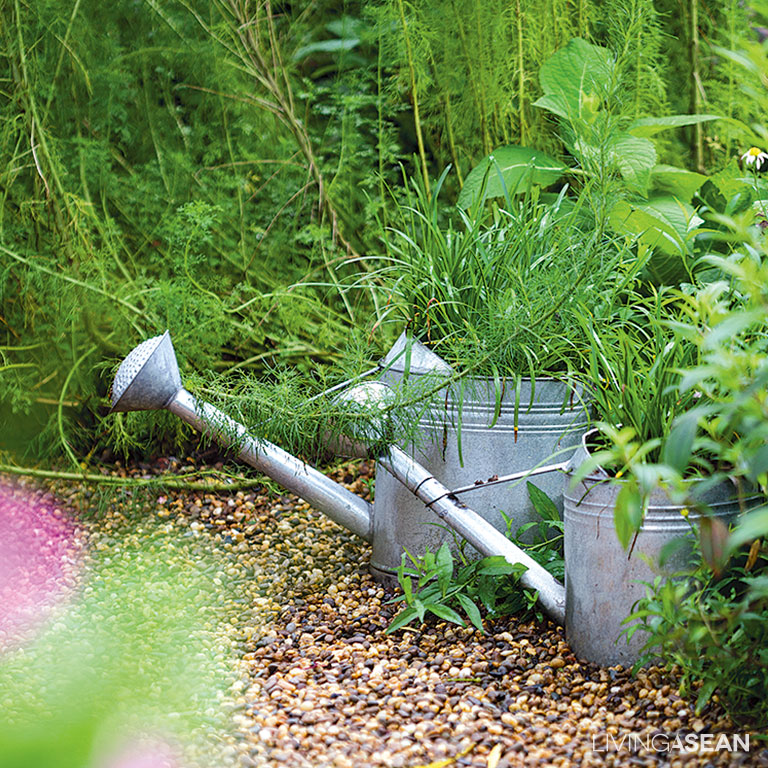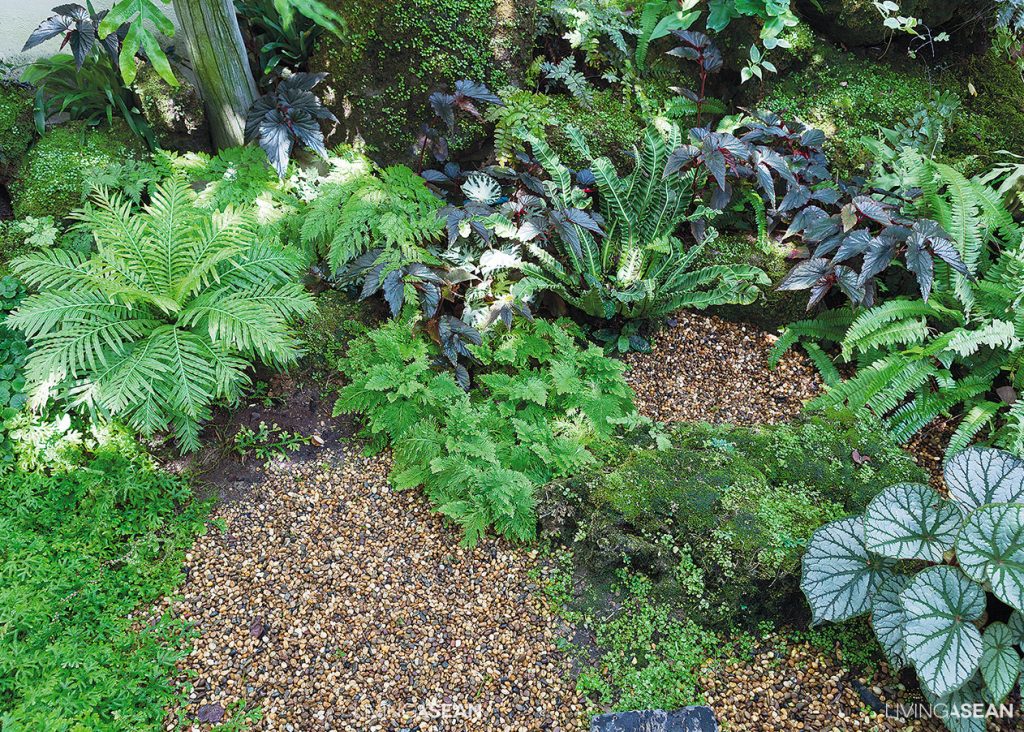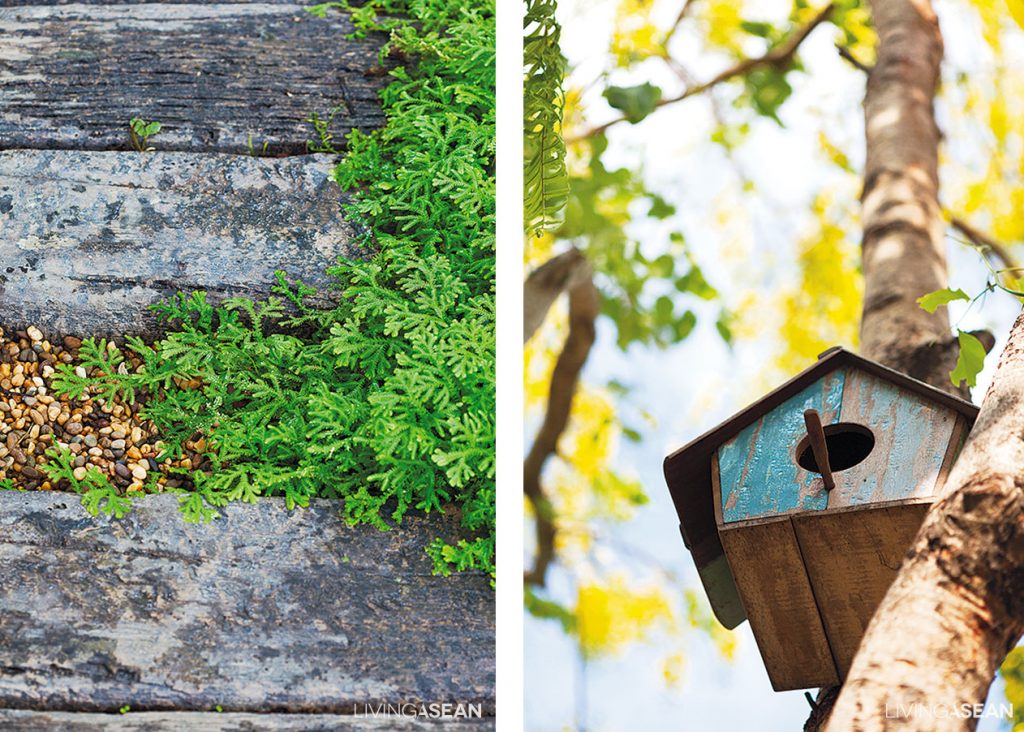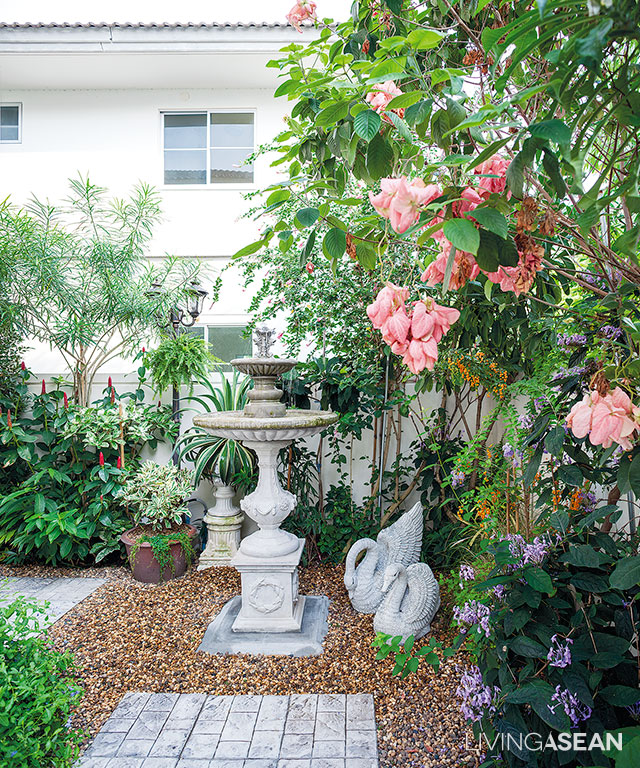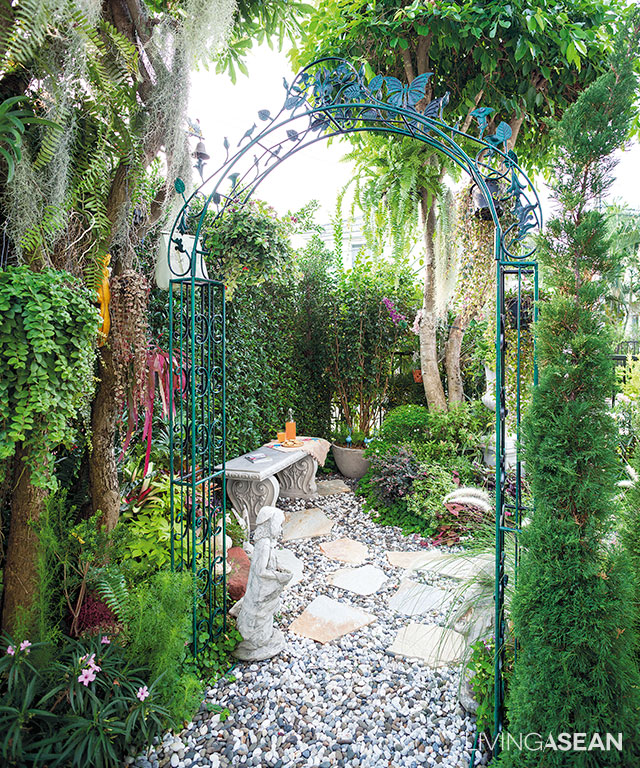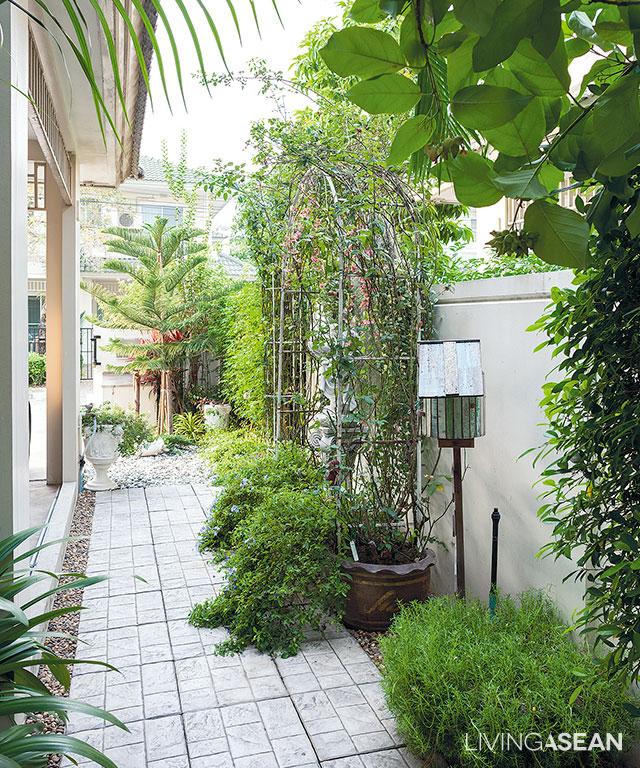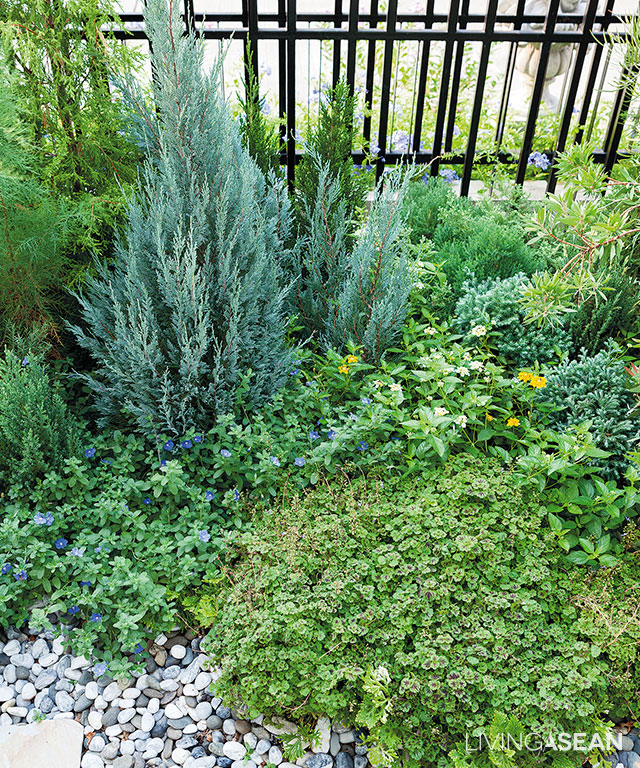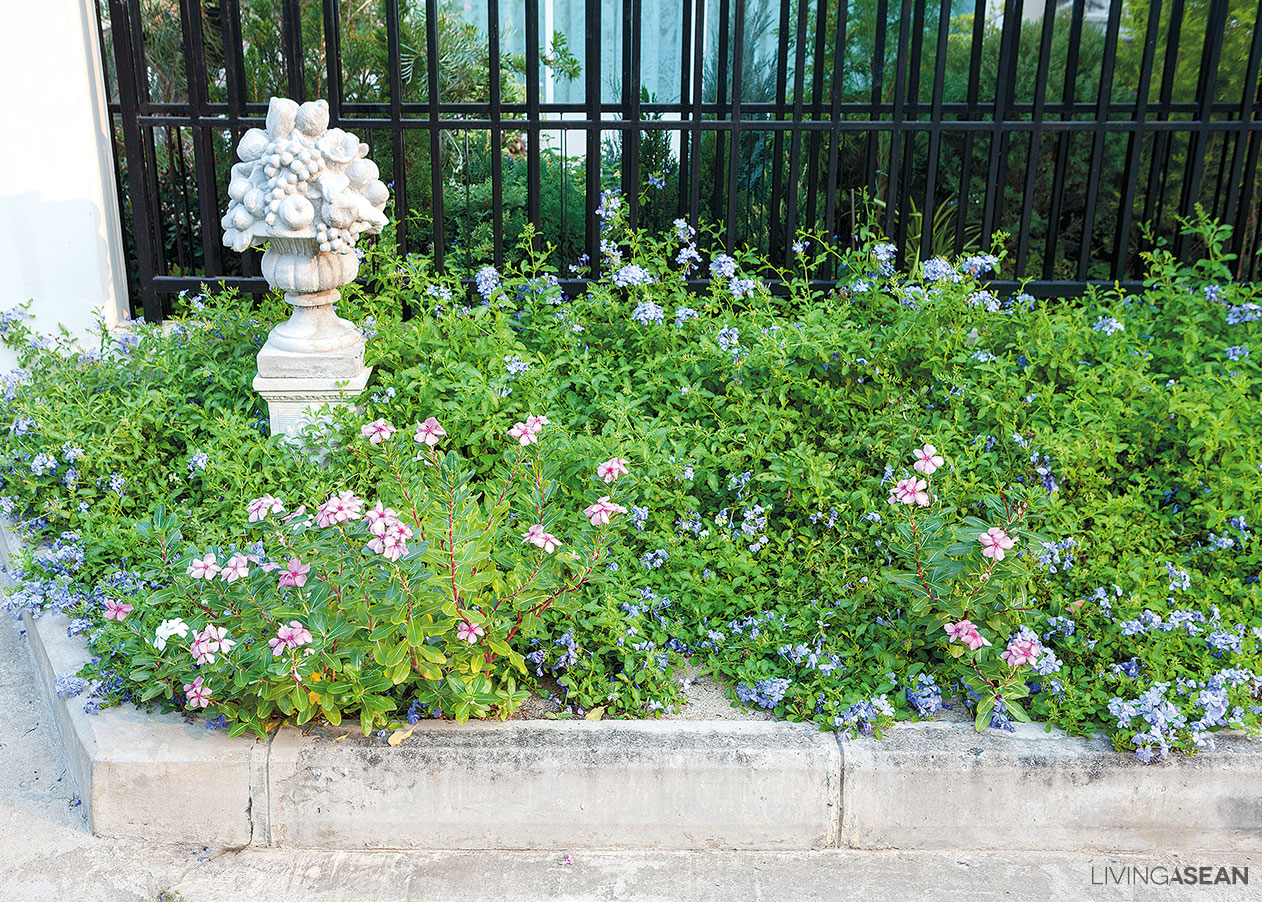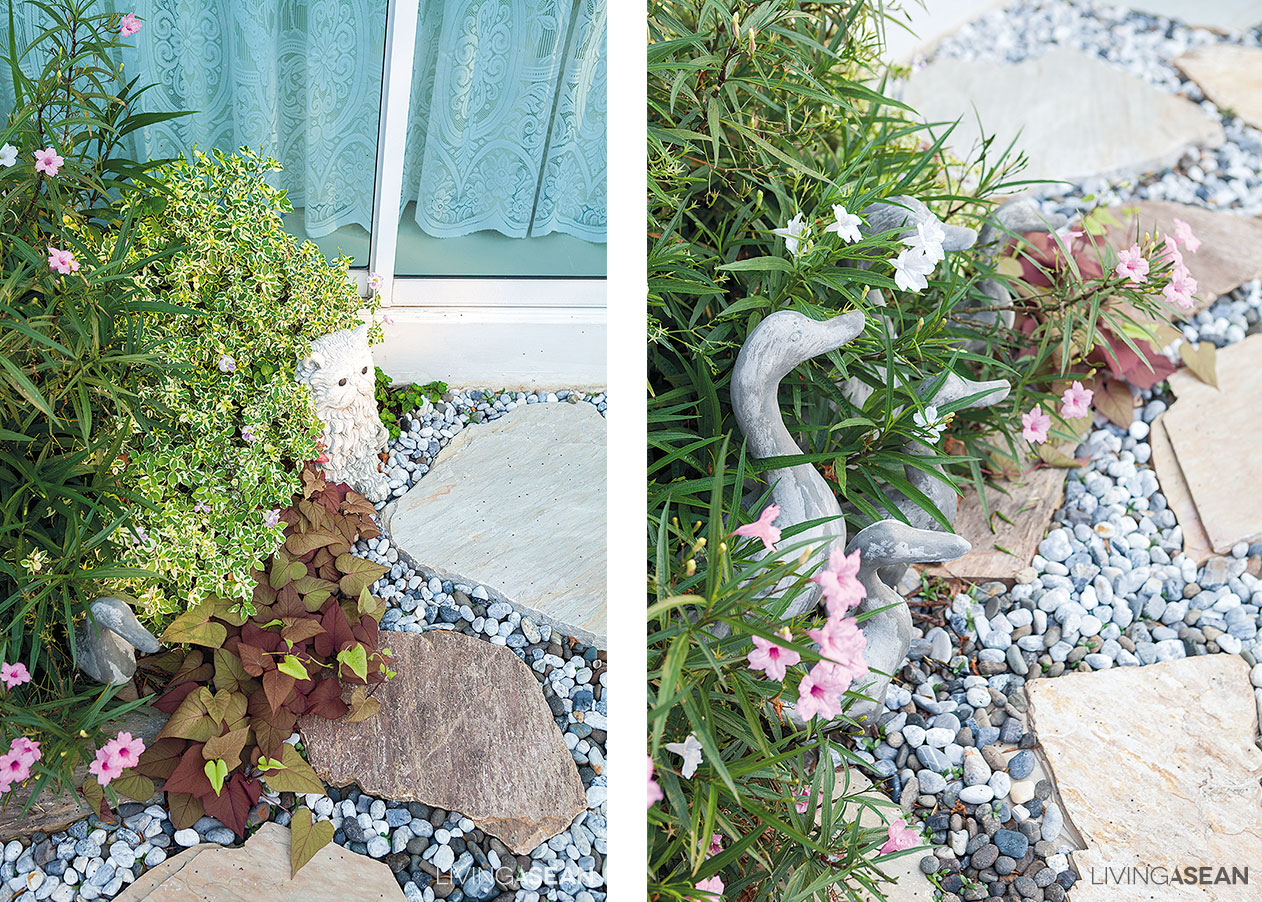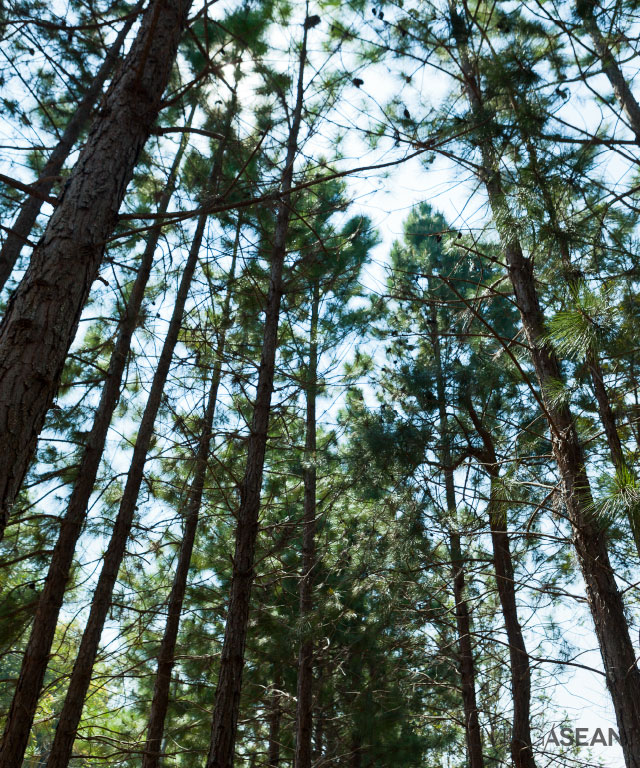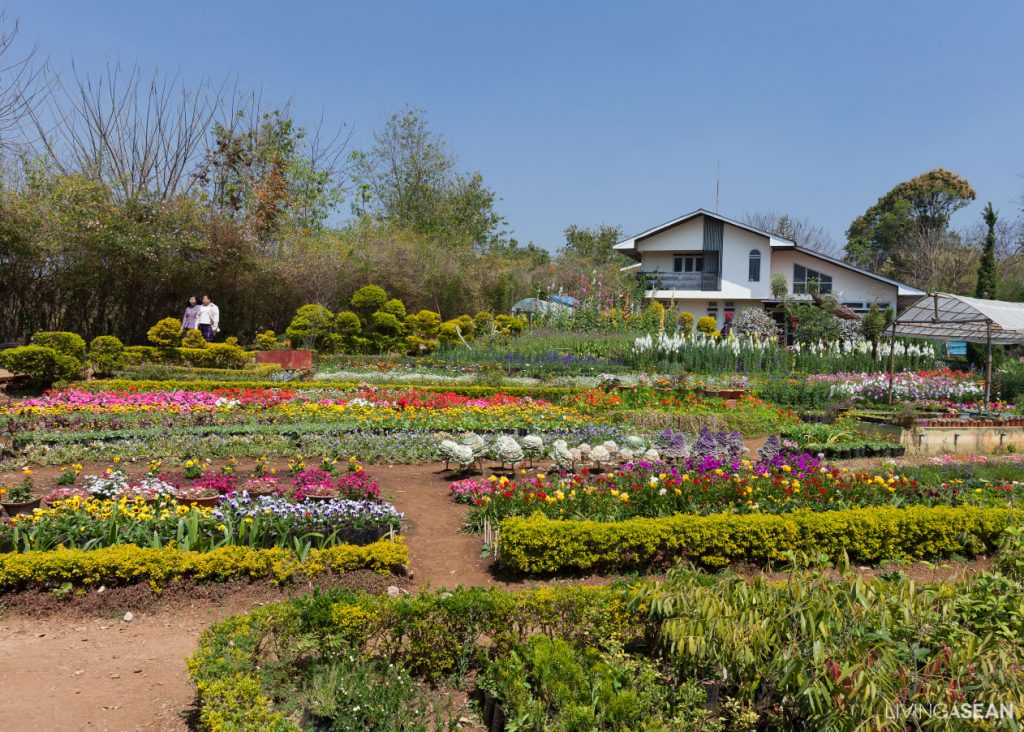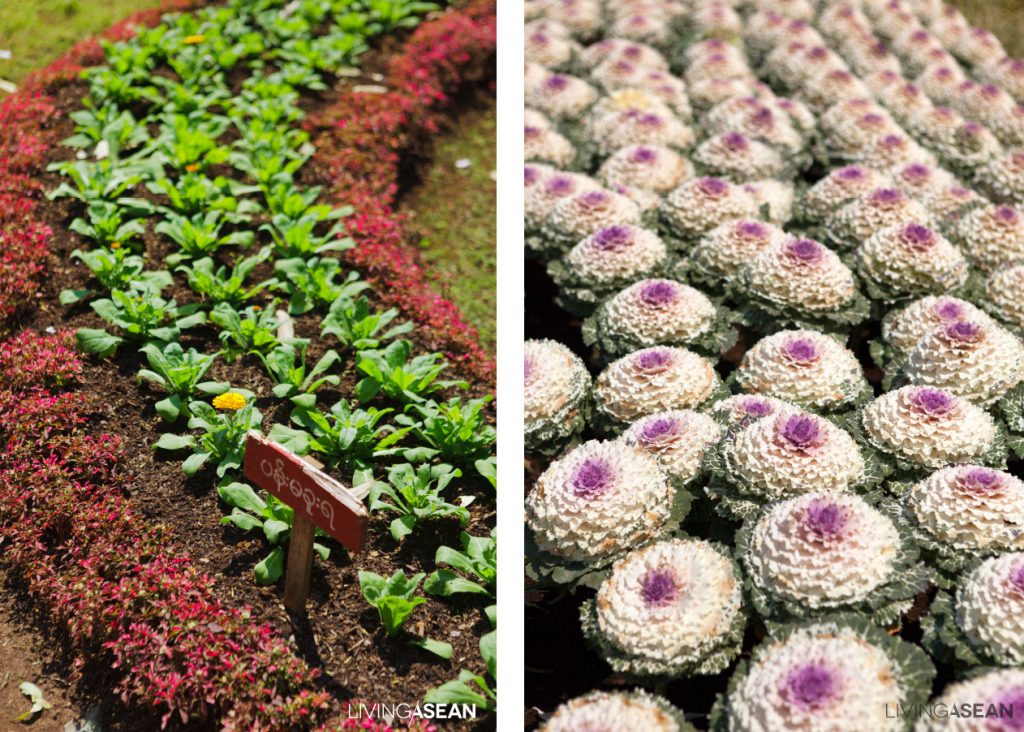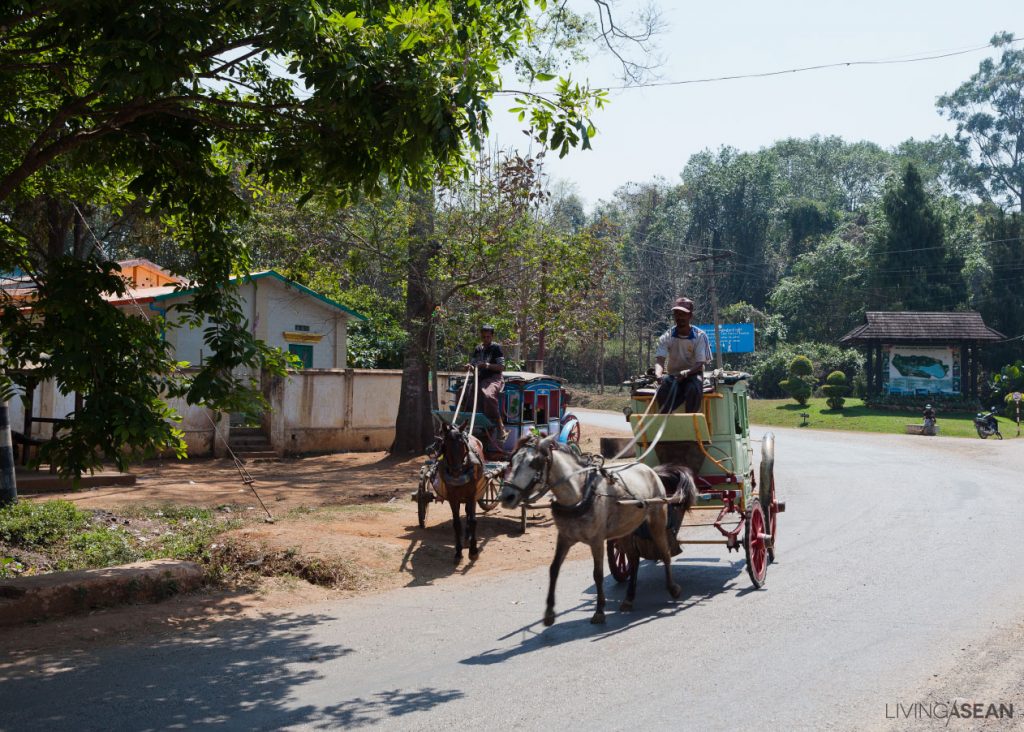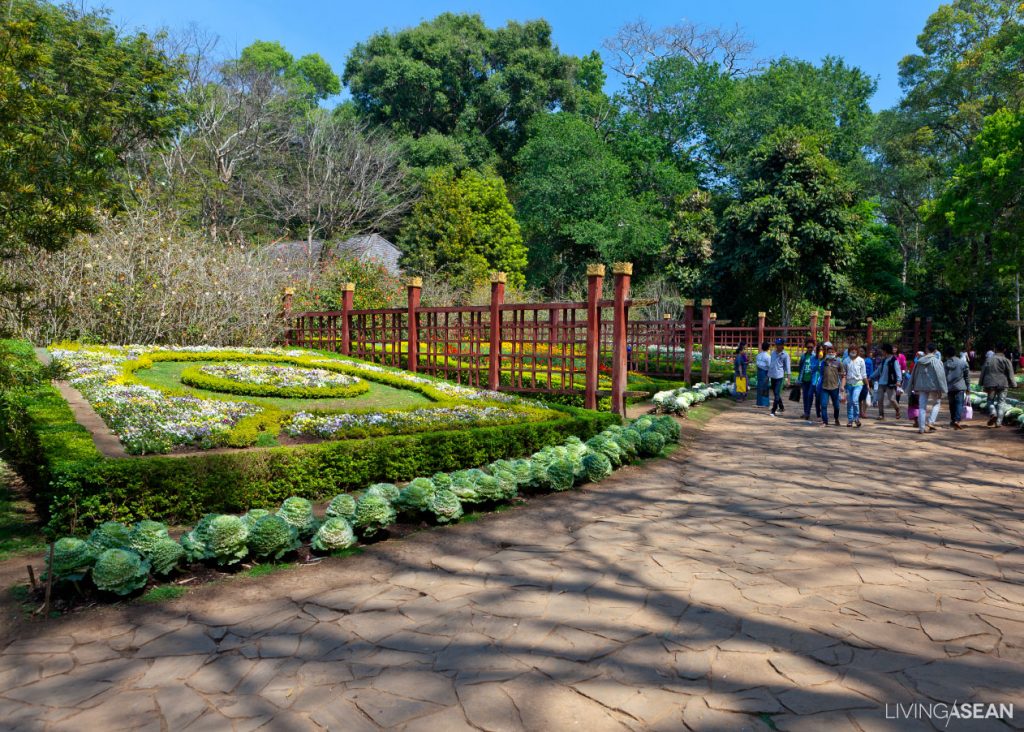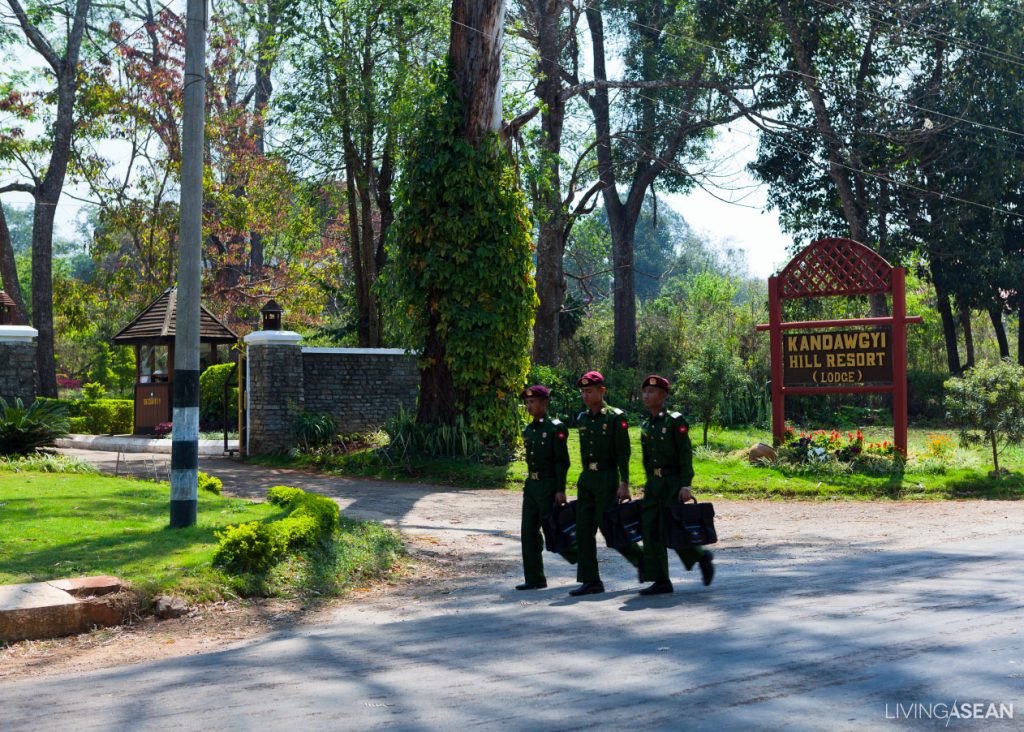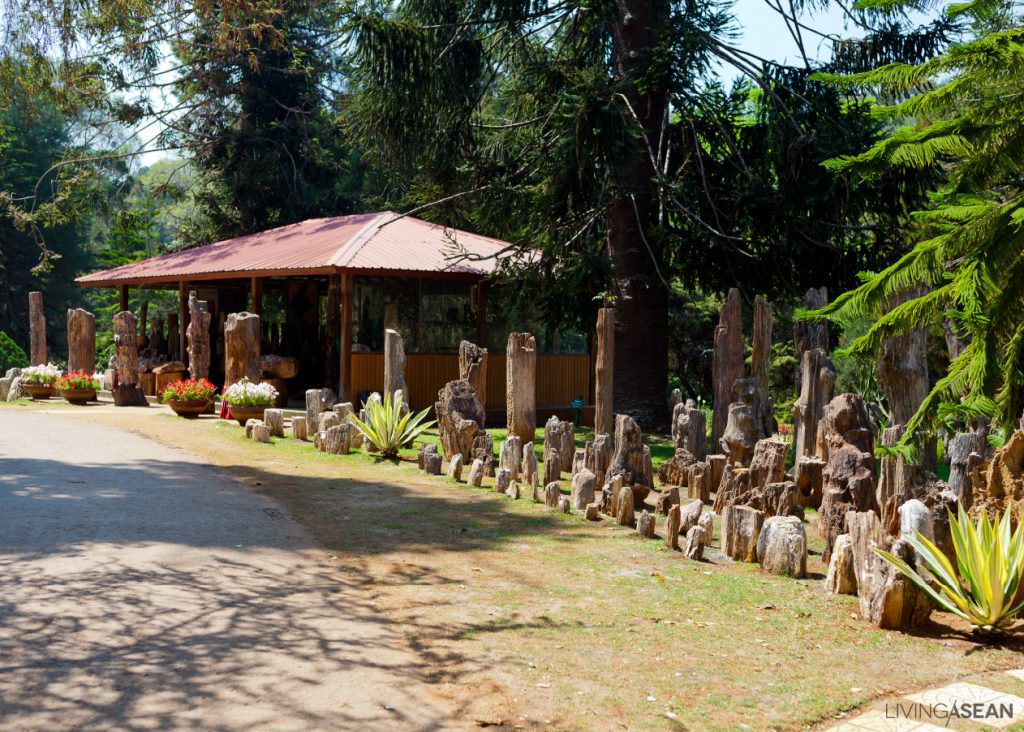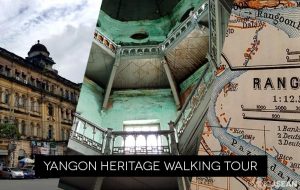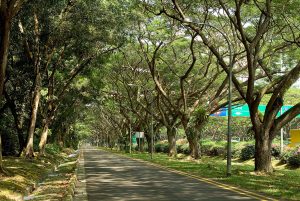/ Chiang Mai, Thailand /
/ Story: Wuthikorn Suthiapa / English version: Bob Pitakwong /
/ Photographs: Sitthisak Namkham /
An old-styled waterfront house was recreated for modern living in Chiang Mai. It is made up of a coffee shop, piano classroom and a private space for the family.

“I want to emulate the Thai style waterfront home of the past, kind of set on land that slightly descends to the riverbank. Like so, the new home is designed with respect for nature. Meantime, it embraces all features that are up to date, from materials to style to character.” So said the designers when asked to elaborate on the concept behind this home project.
The handsome waterfront house featuring smooth exteriors and eye-catching roof design is affectionately called “Baan Muan,” literally home of baby Muan.

The homeowners, Nathee and Kanokwan Nateniyom inherited this piece of land from their grandma. Their baby was born while the construction project was underway.
So both the home and the baby were given the same name. Ekapab Duangkaew from EKAR and Arthasith Kongmonkhol from Full Scale Studio were responsible for the design.

As Ekapab put it, “We were so fortunate to have received full freedom to conceptualize this project. Arthasith and I then proceeded to develop a waterfront house design with an emphasis on relationships with the surrounding terrain features. Various functions were laid out based on their proximity to the water’s edge or existing patches of greenery.
“The next step was about translating the concept to meet the homeowners’ needs and personality.”

In so doing, the designers had to identify features that were typical of the waterfront house of the past. They looked into every design from Post-Modern to Minimalist in a bid to arrive at a common ground.
The final design showcased the main hallway as the centerpiece of this new home.

“At the time we didn’t have a specific design in mind. We just said that we preferred open spaces. My husband wanted to put Mom’s coffee shop in front. For us, we needed a piano room for practicing and giving music lessons at home. Basically, that was it,” said Kanokwan.
Hence the open interior space was the goal. The plan envisaged the main hallway, the kitchen and seating areas for everyone merging into one big space.

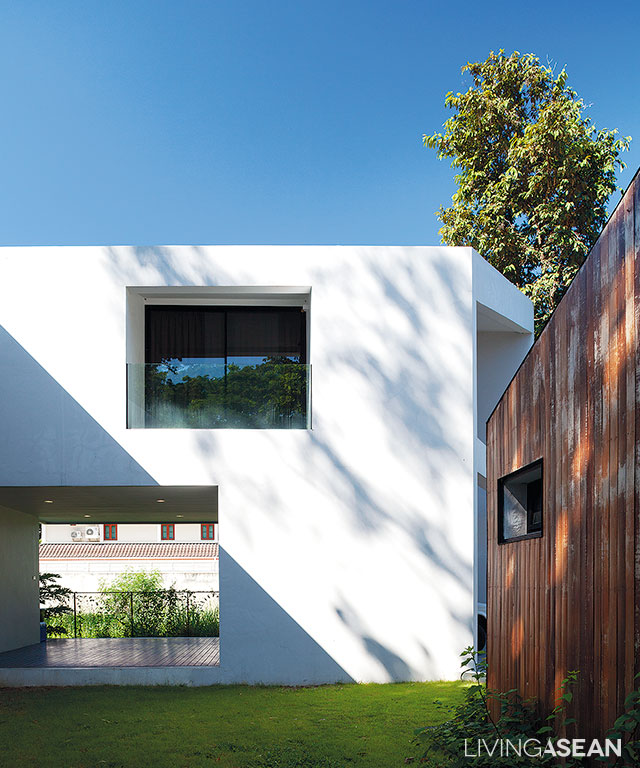
“I like sitting here,” said Nathee referring to the big dining table.“The waterfront is on this side. Meantime, the main entrance opens to the front yard. On the other side, Kanokwan and the baby are playing on the sofa. They make for relaxing interior spaces and I like it here.
“If asked to describe this home, I will just make it brief – cozy”
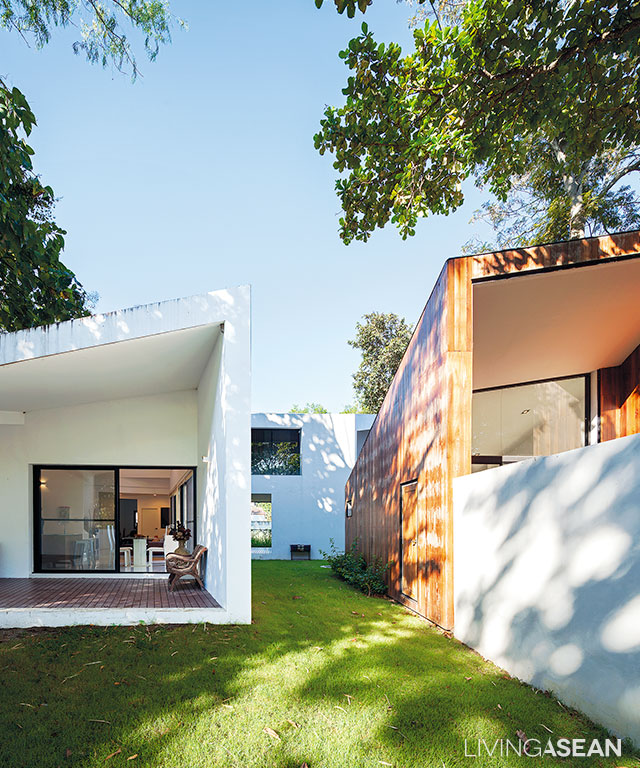
The open plan design of the waterfront house meets the needs of this small family of three. Everyone is aware of everything that goes on inside the vibrant interior spaces. It is the kind of plan that merges all parts of the house into one great room.
The designers reserve the second floor for privacy. The first floor has a playroom for the kid and the piano room for Kanokwan. The rest is open.

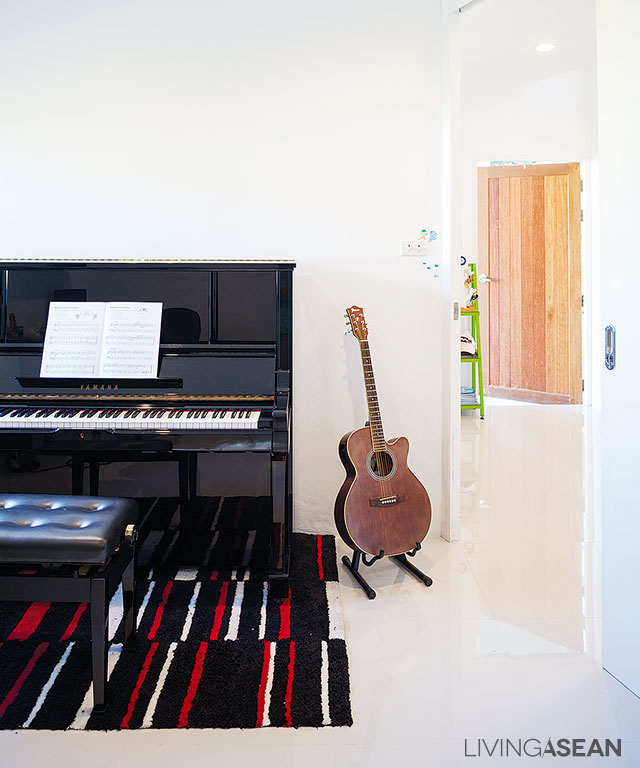
The property comes in two zones, business and residential. The coffee shop sits in front and is covered in natural wood palettes.
From the outside looking in, the roof design is eye-catching in every respect. As a matter of fact, its unique look is dictated by interior design needs.
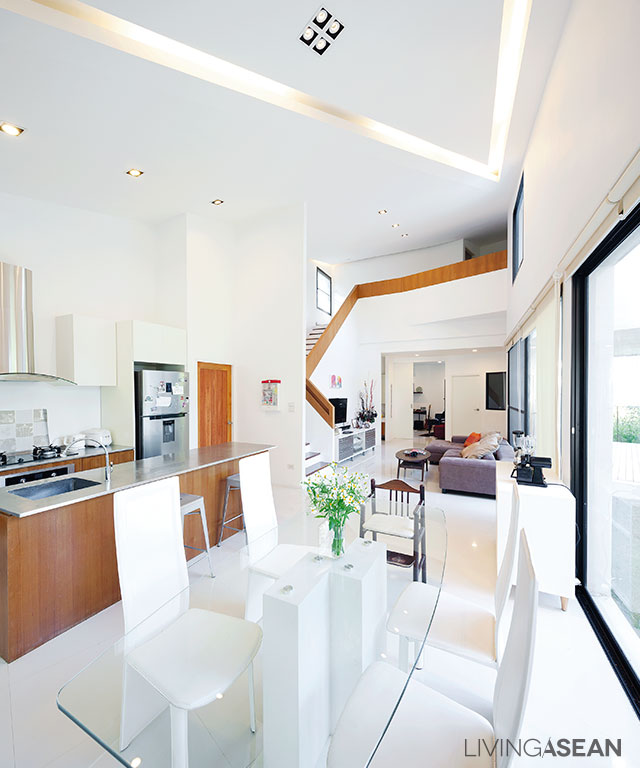
“It has to do with how we want to view the great outdoors from within the home. For this reason, the main hallway steps aside just a little bit so that the waterfront area can be seen in full view from the bedroom. Likewise, one side of the coffee shop offers a sundeck that overlooks the water’s edge.
“It is never meant to be jazzy. Rather we take into account advantages and disadvantages of every component before arriving at the final design,” Nathee explained.

By now, our readers probably feel they have been mistaken all along about design intentions. A house that looks showy at first sight may not be showy after all. Rather it is designed for easy waterfront living based on existing terrain features and homeowner needs.
All things considered, it strikes the right balance to showcase a new kind of waterfront home, one with an eye-catching minimalist style.

Owner: Nathee and Kanokwan Nateniyom
Architect: EKAR and Full Scale Studio








